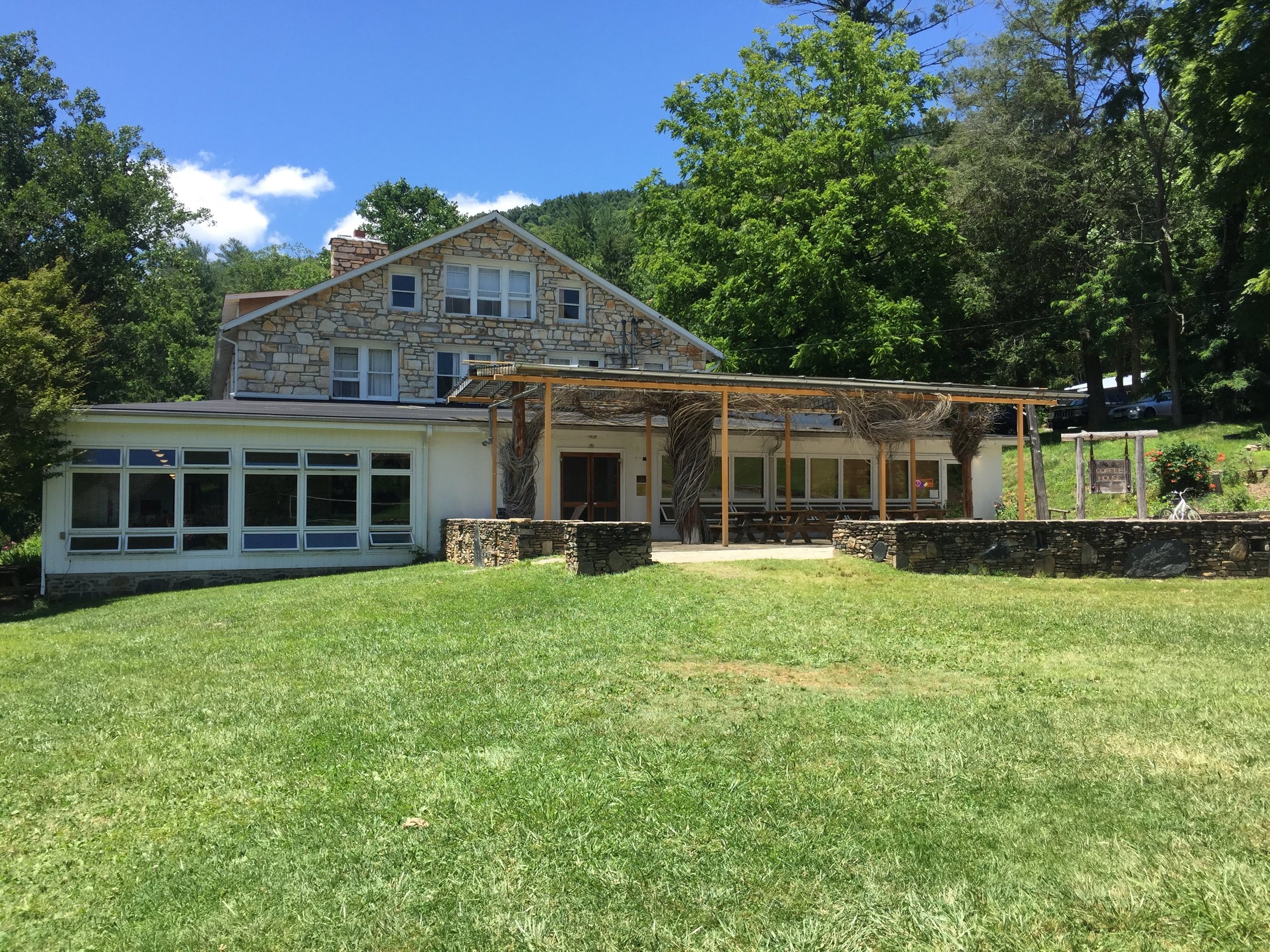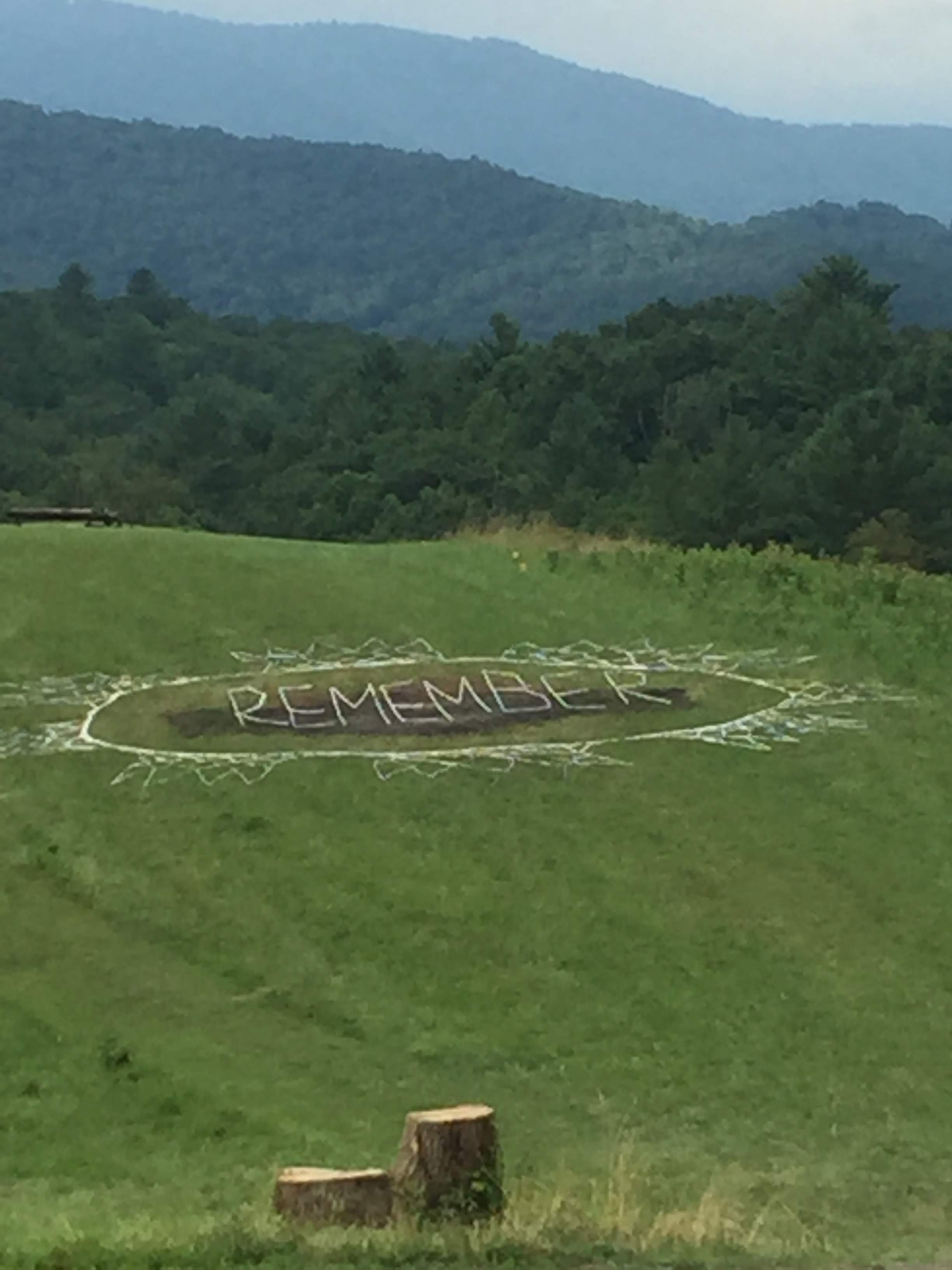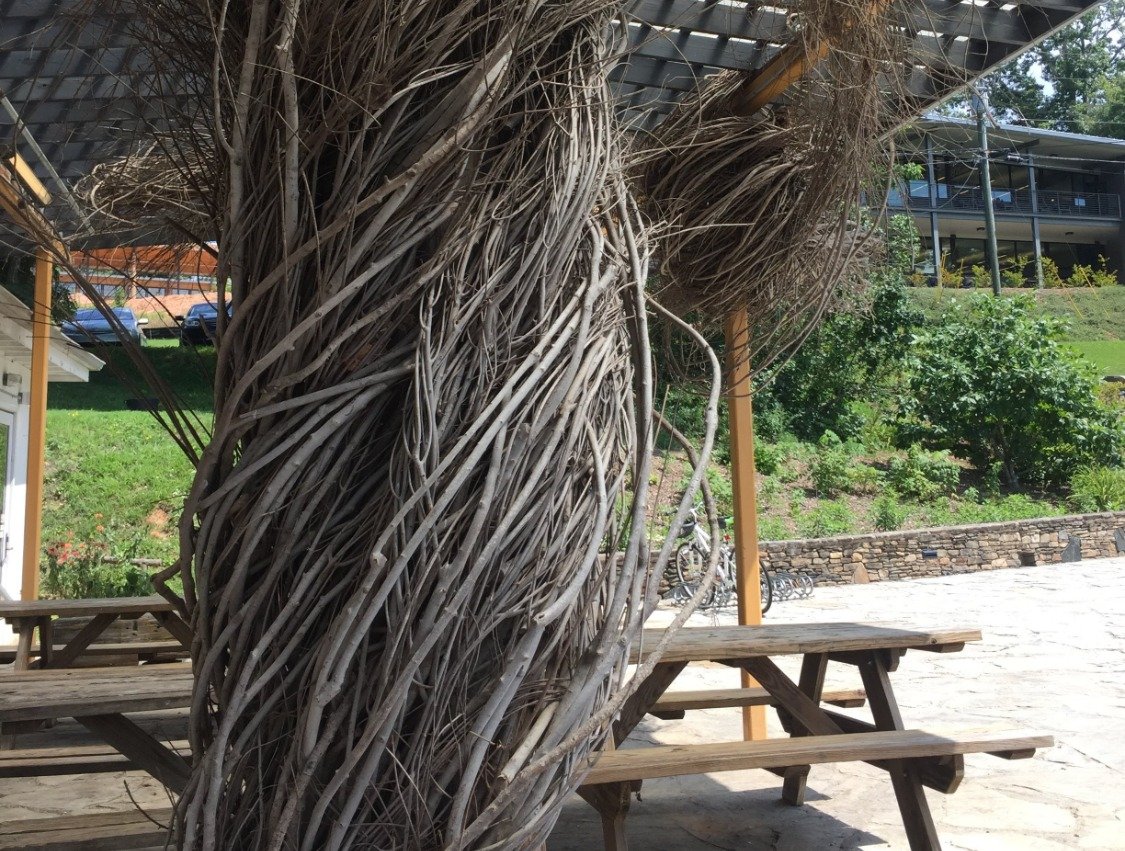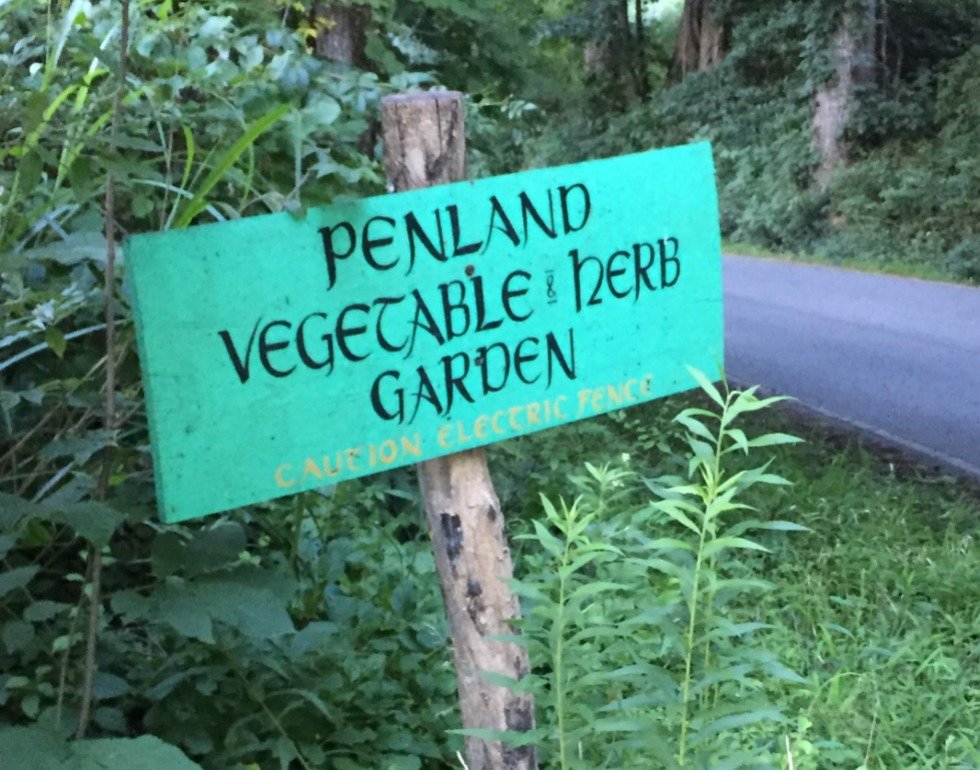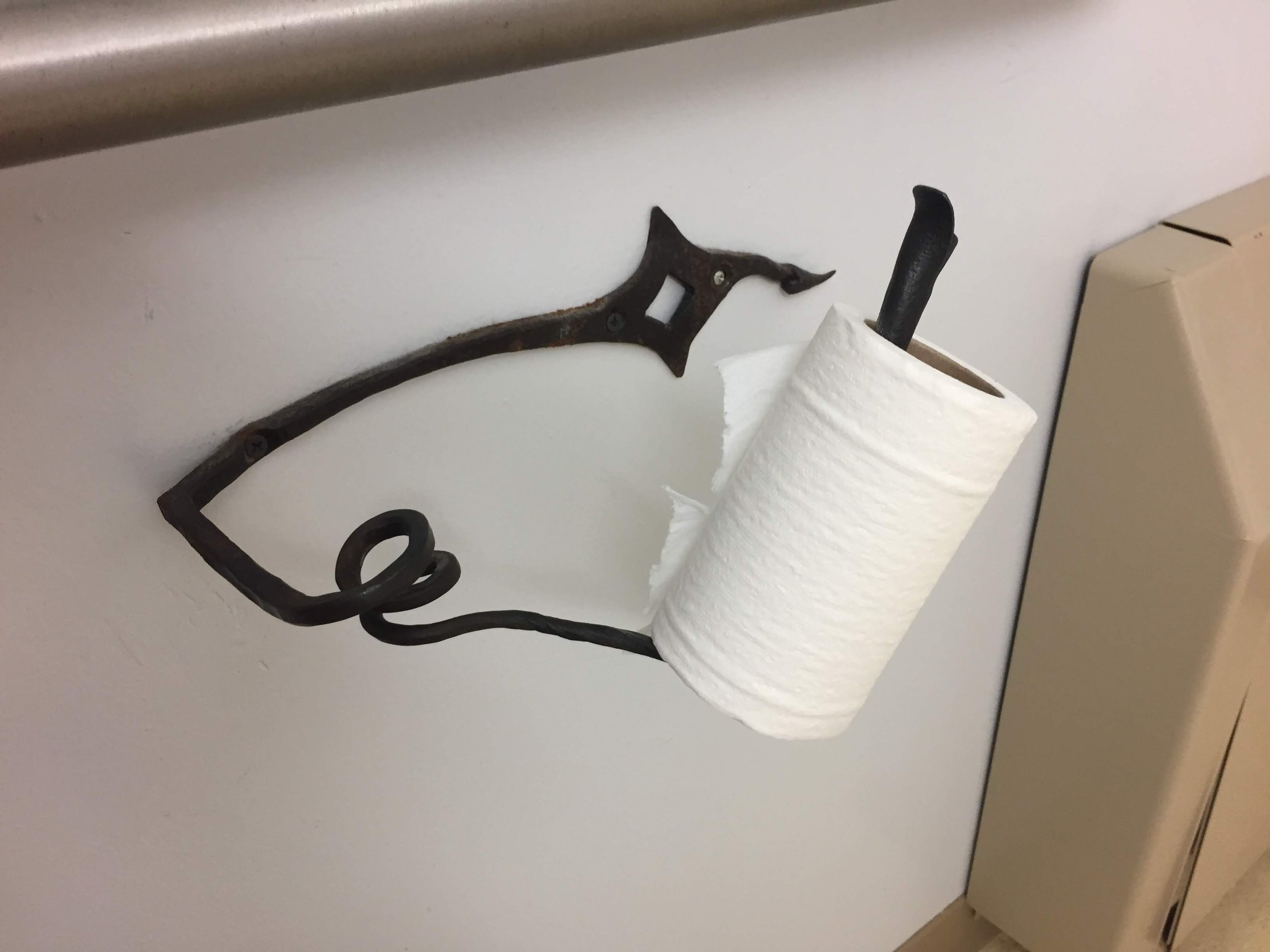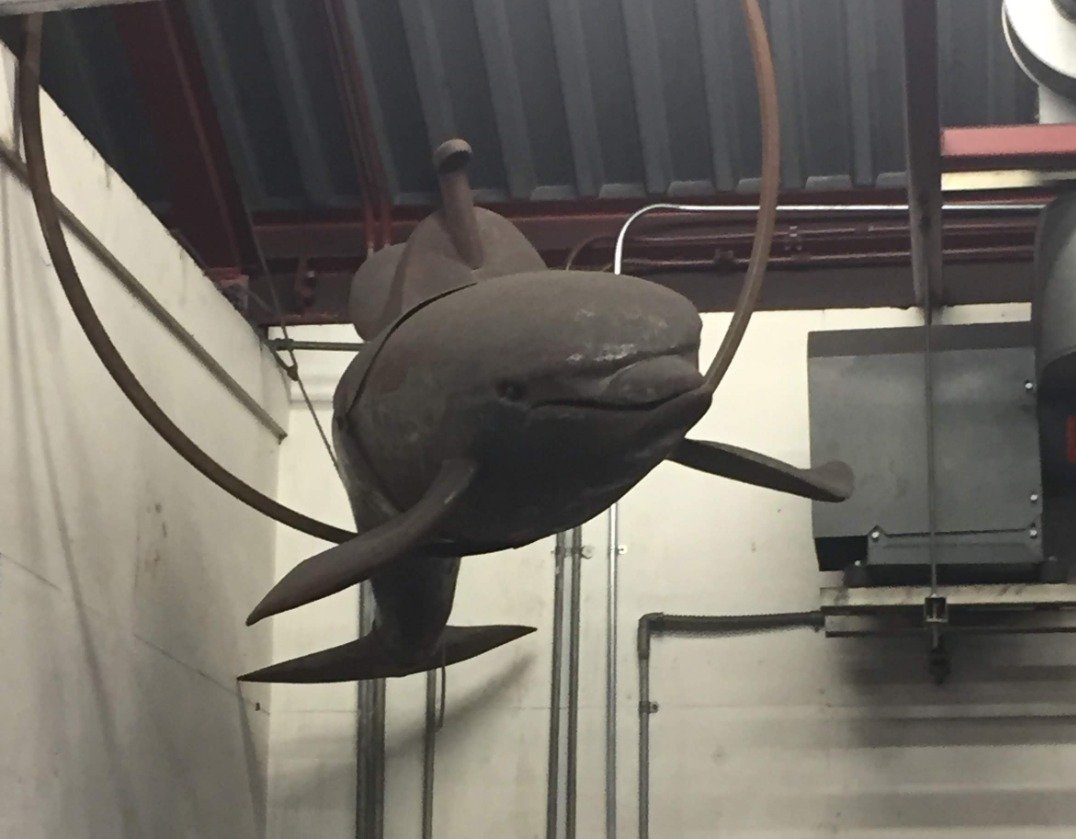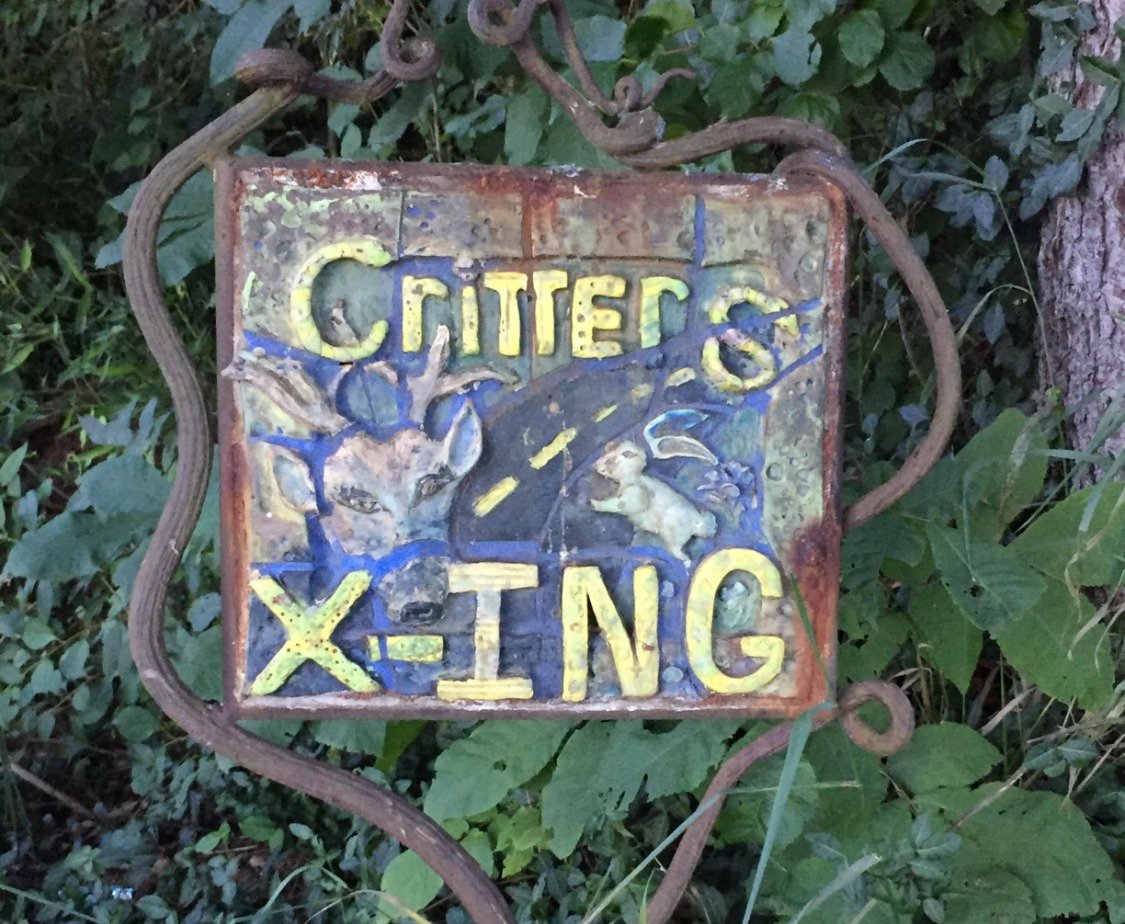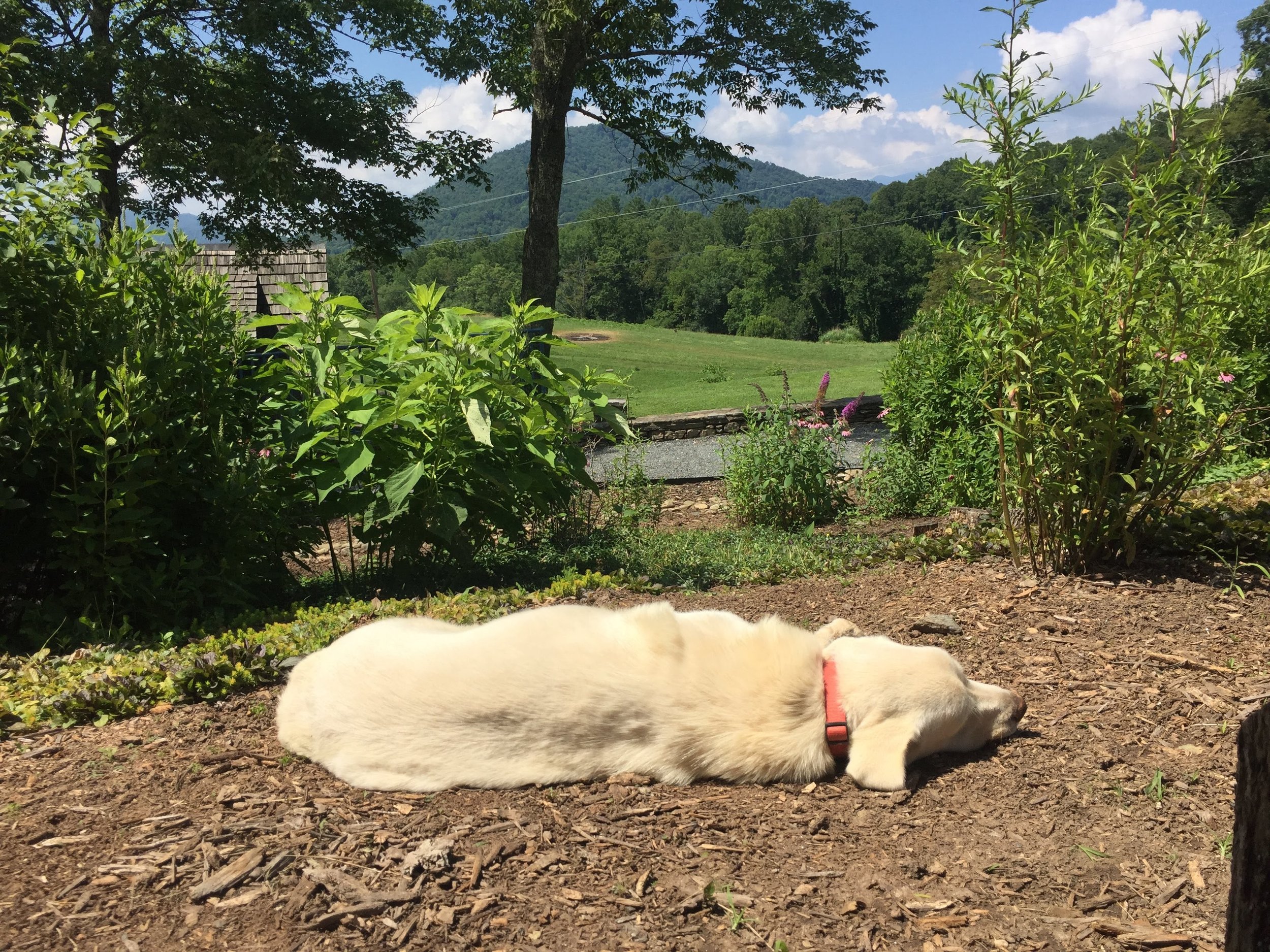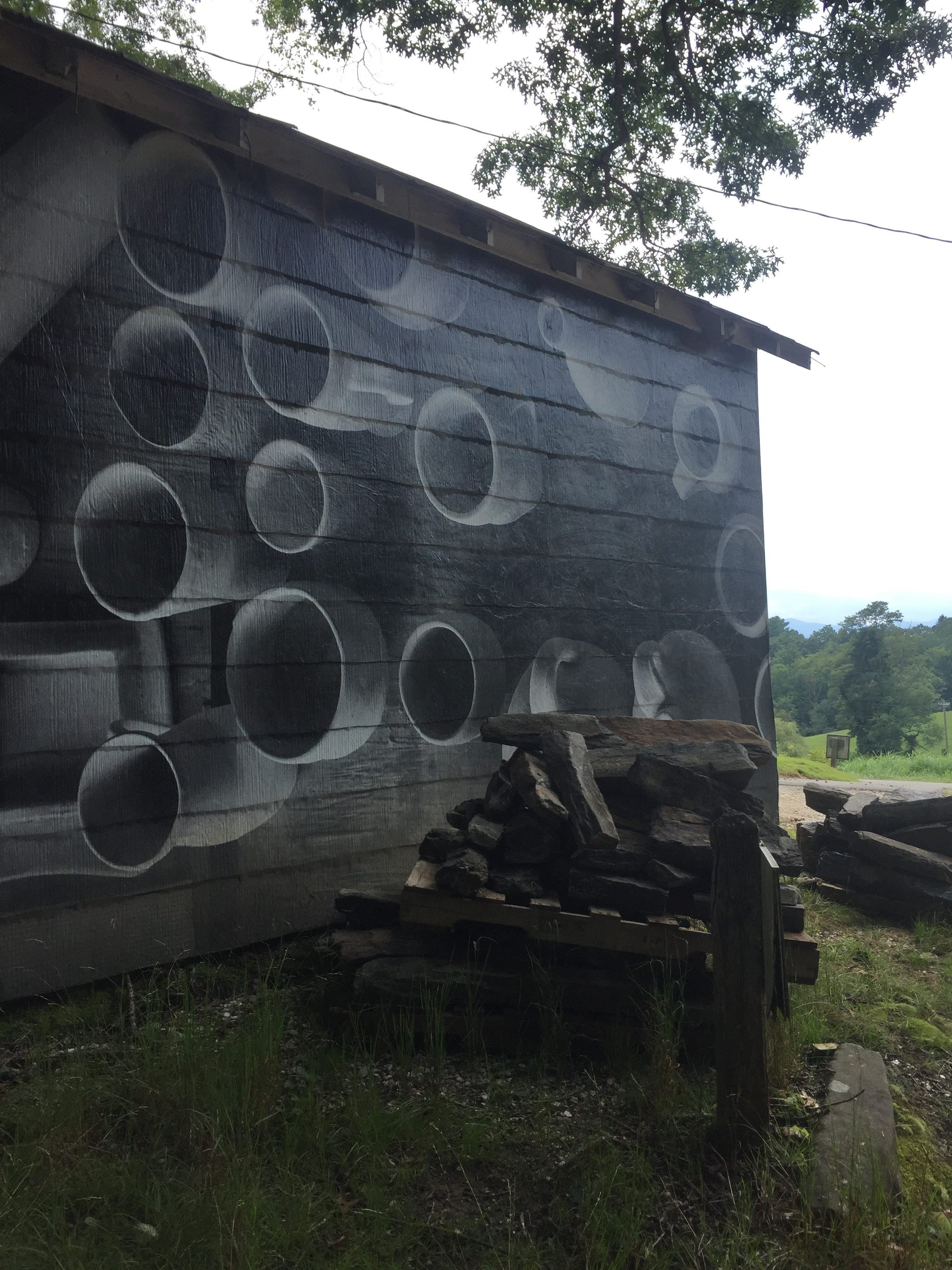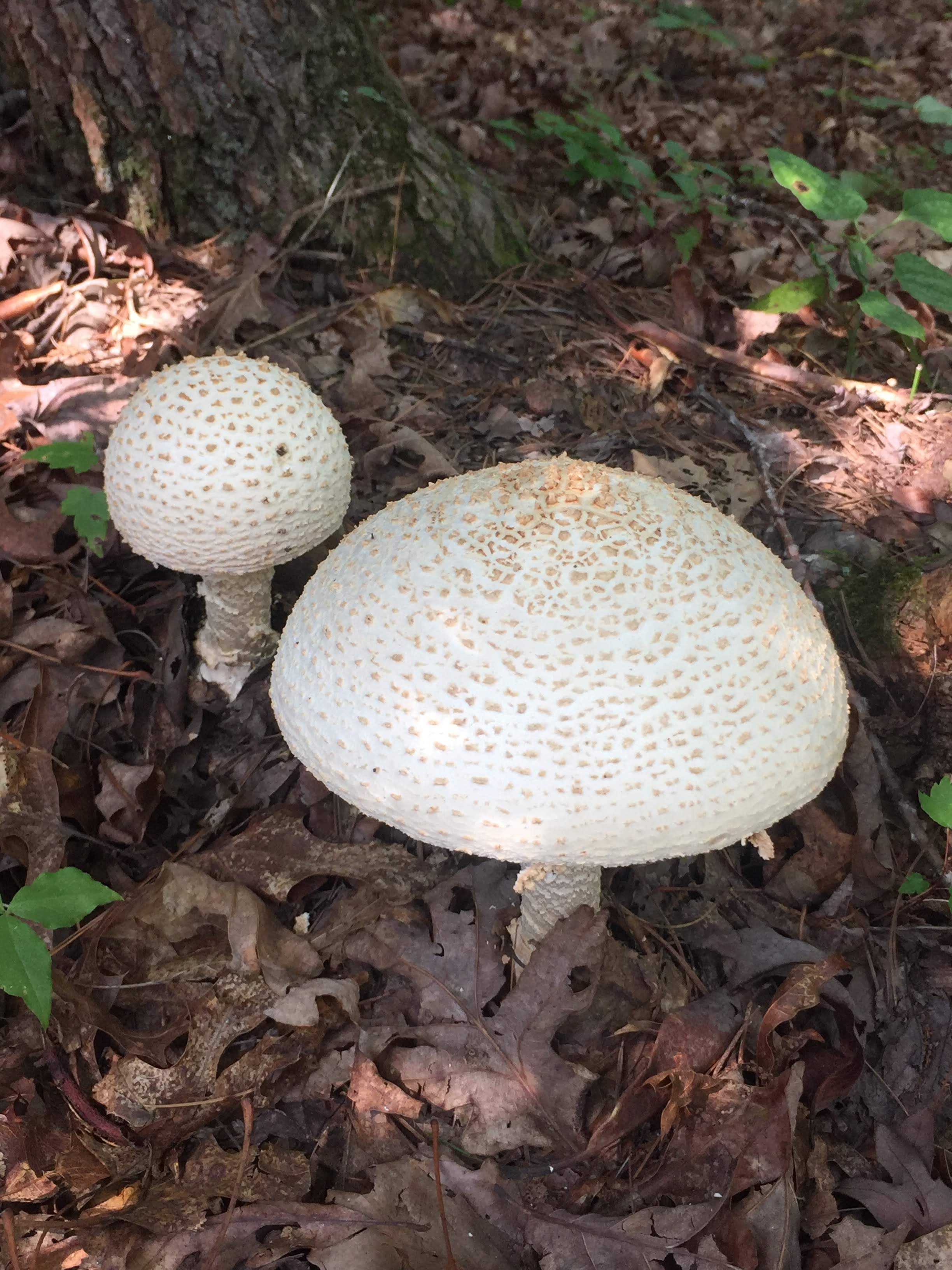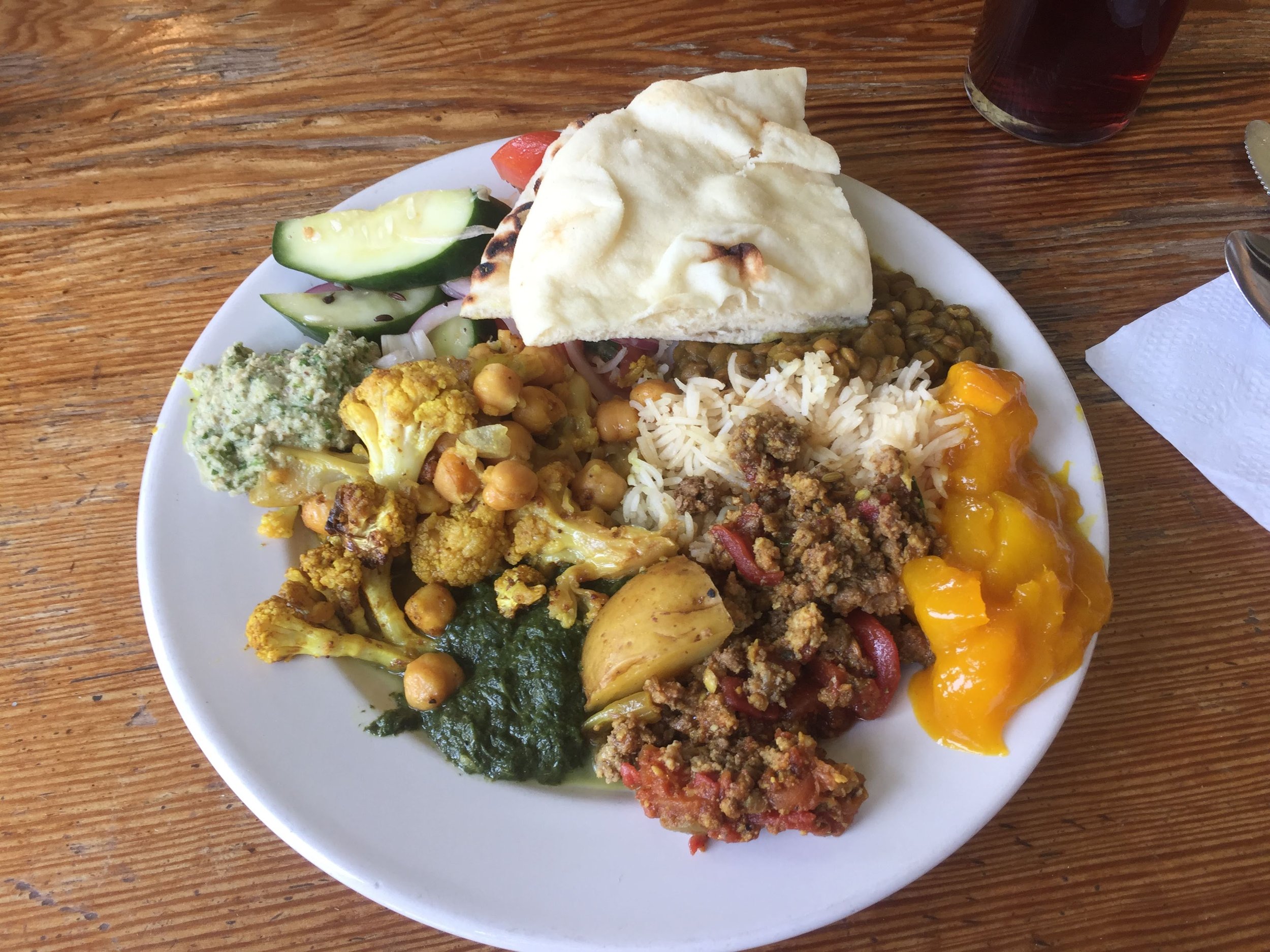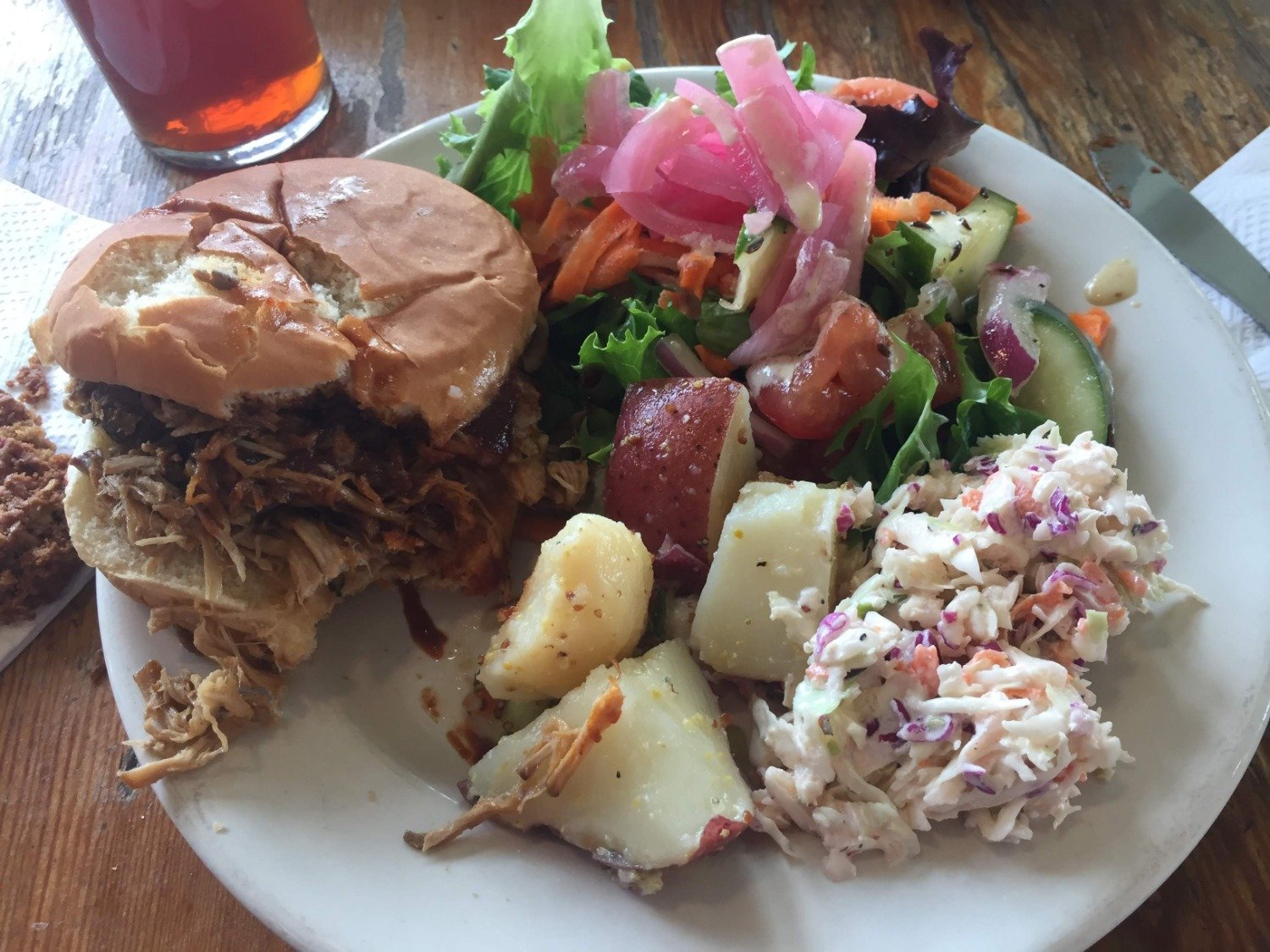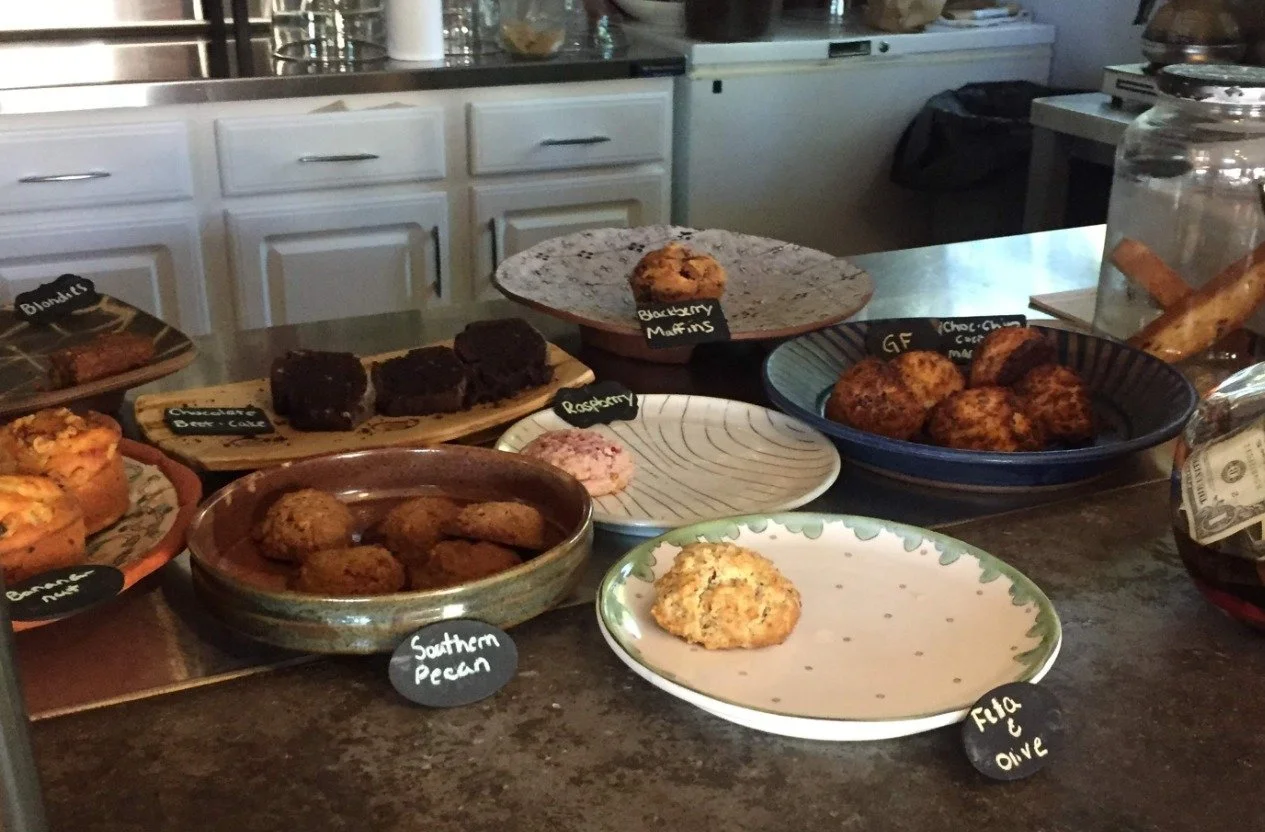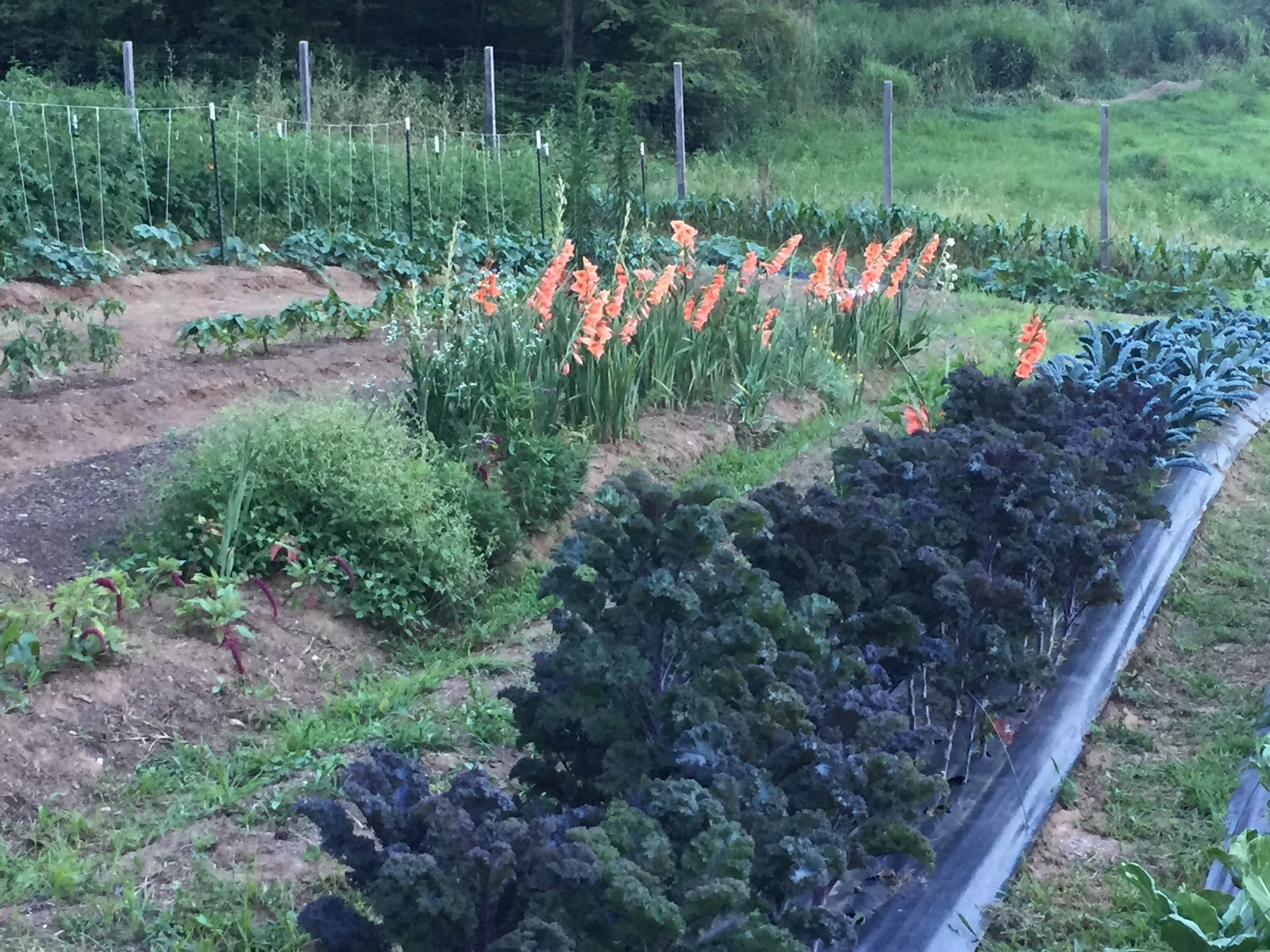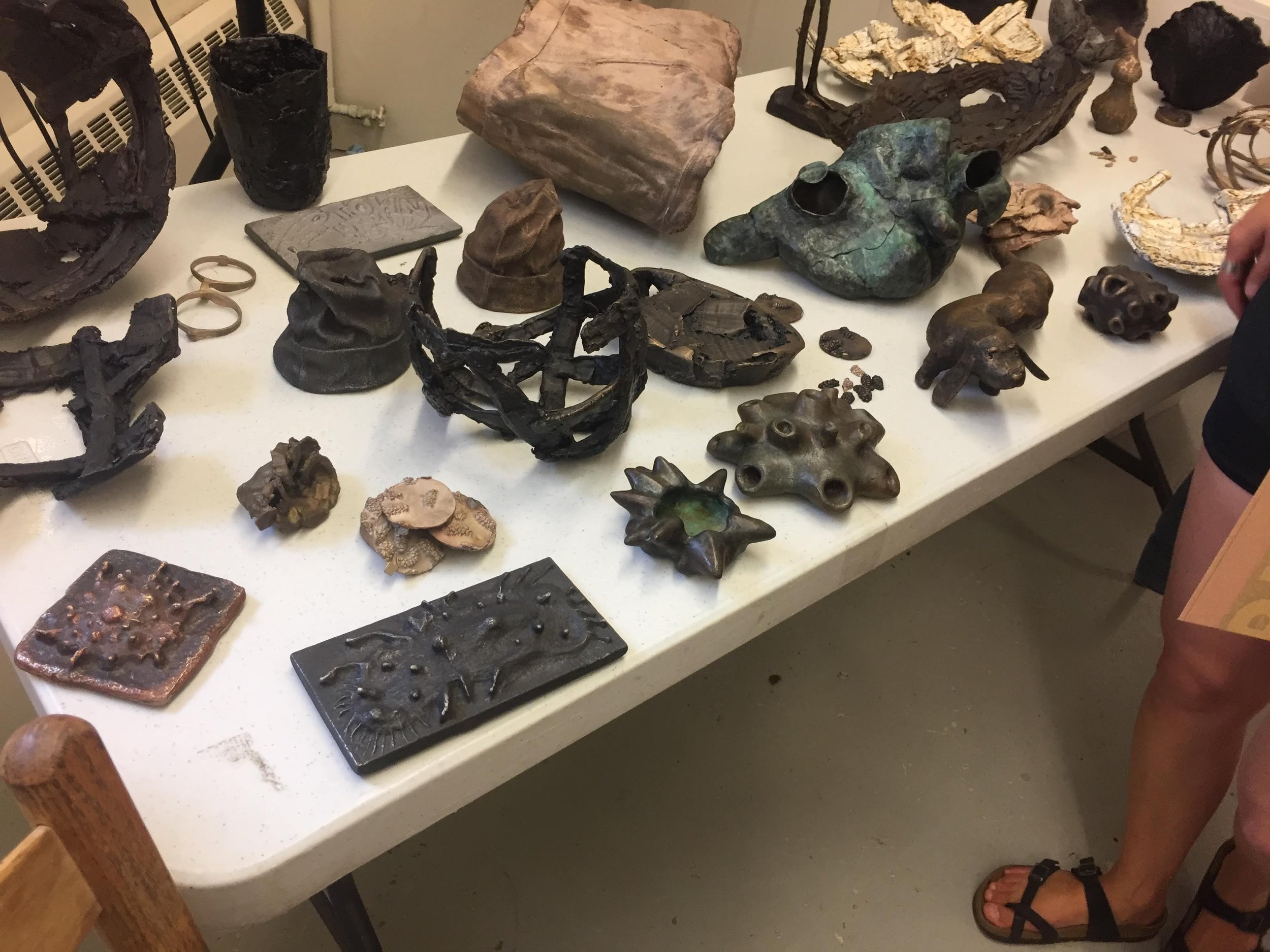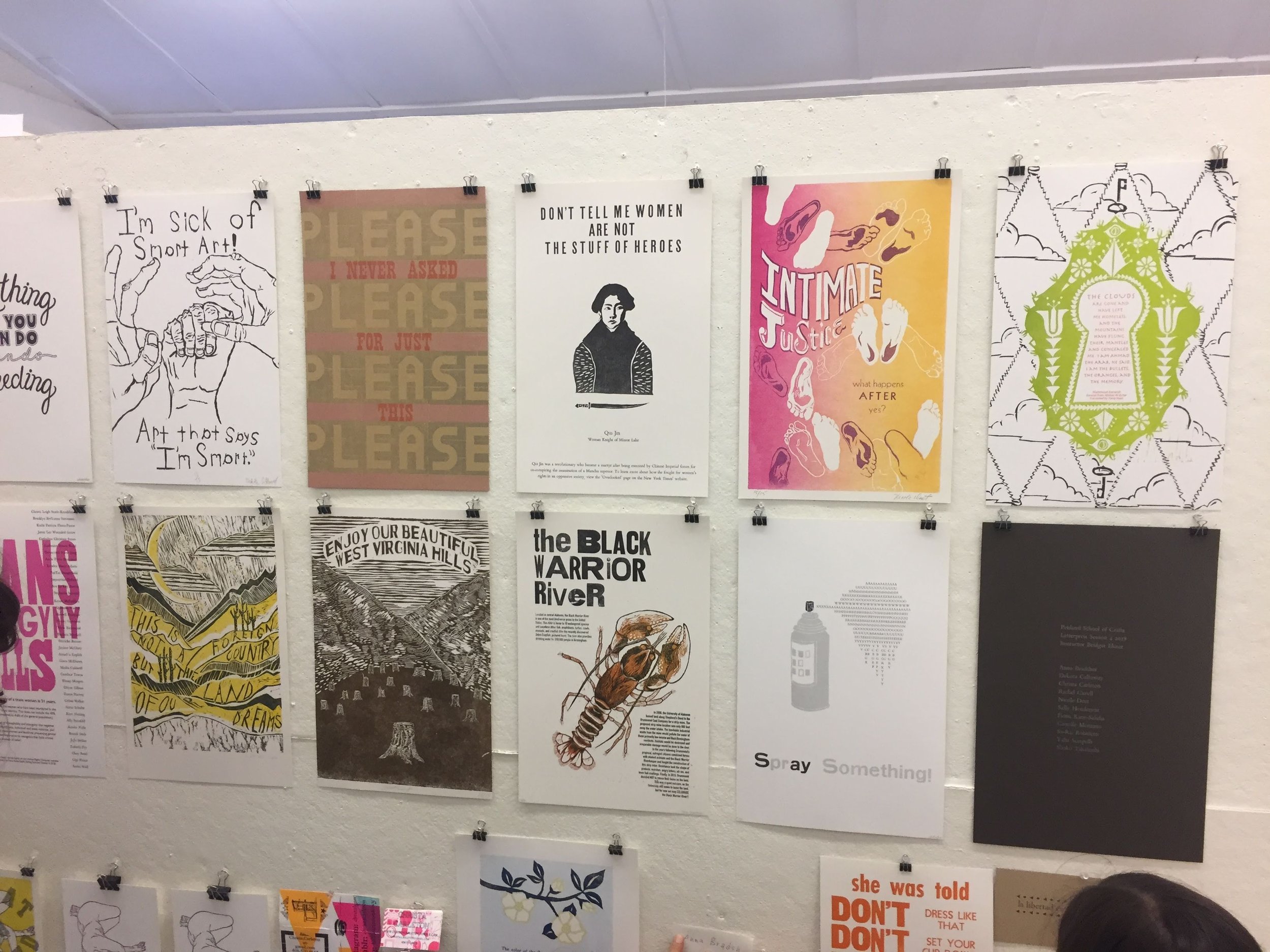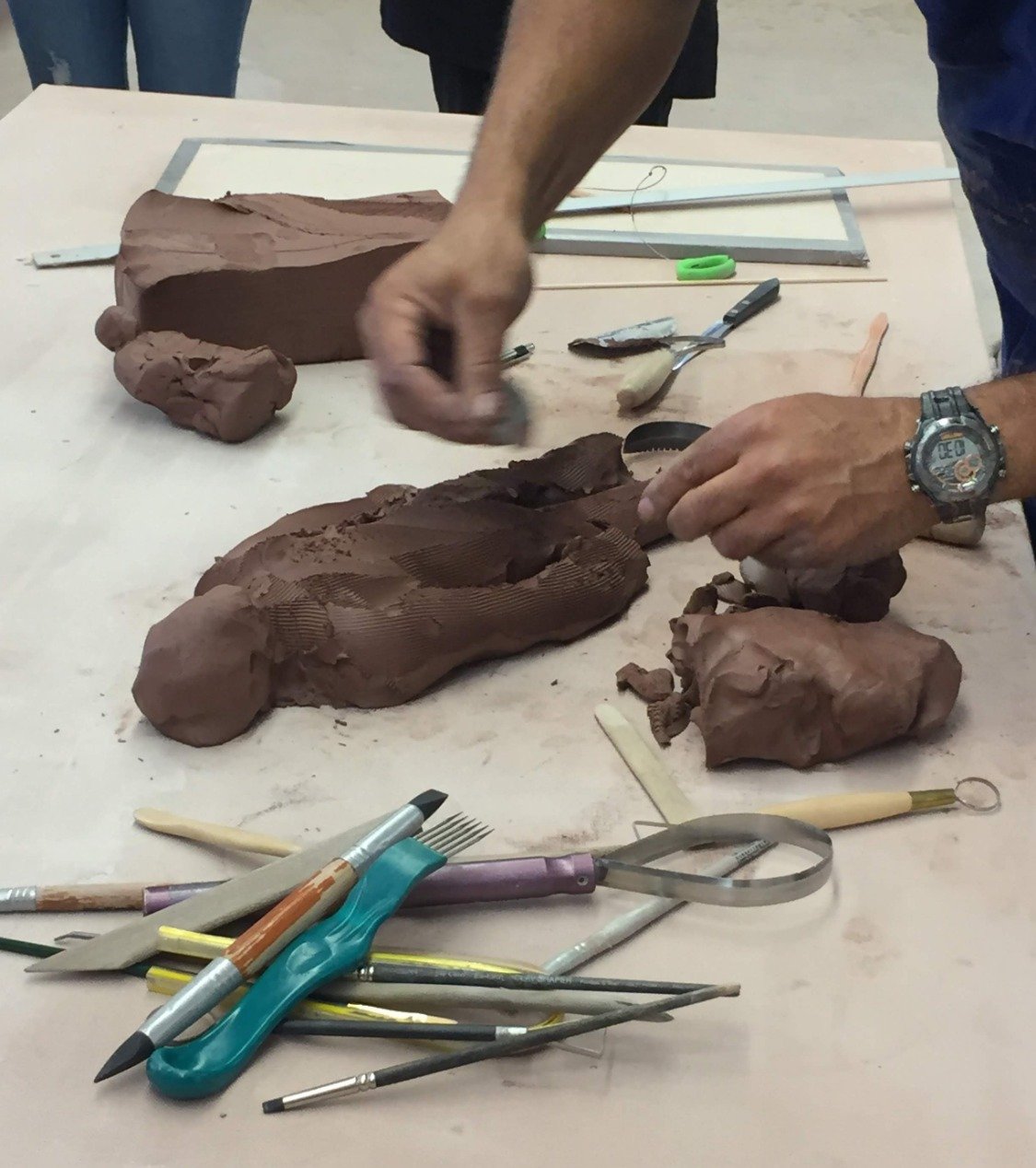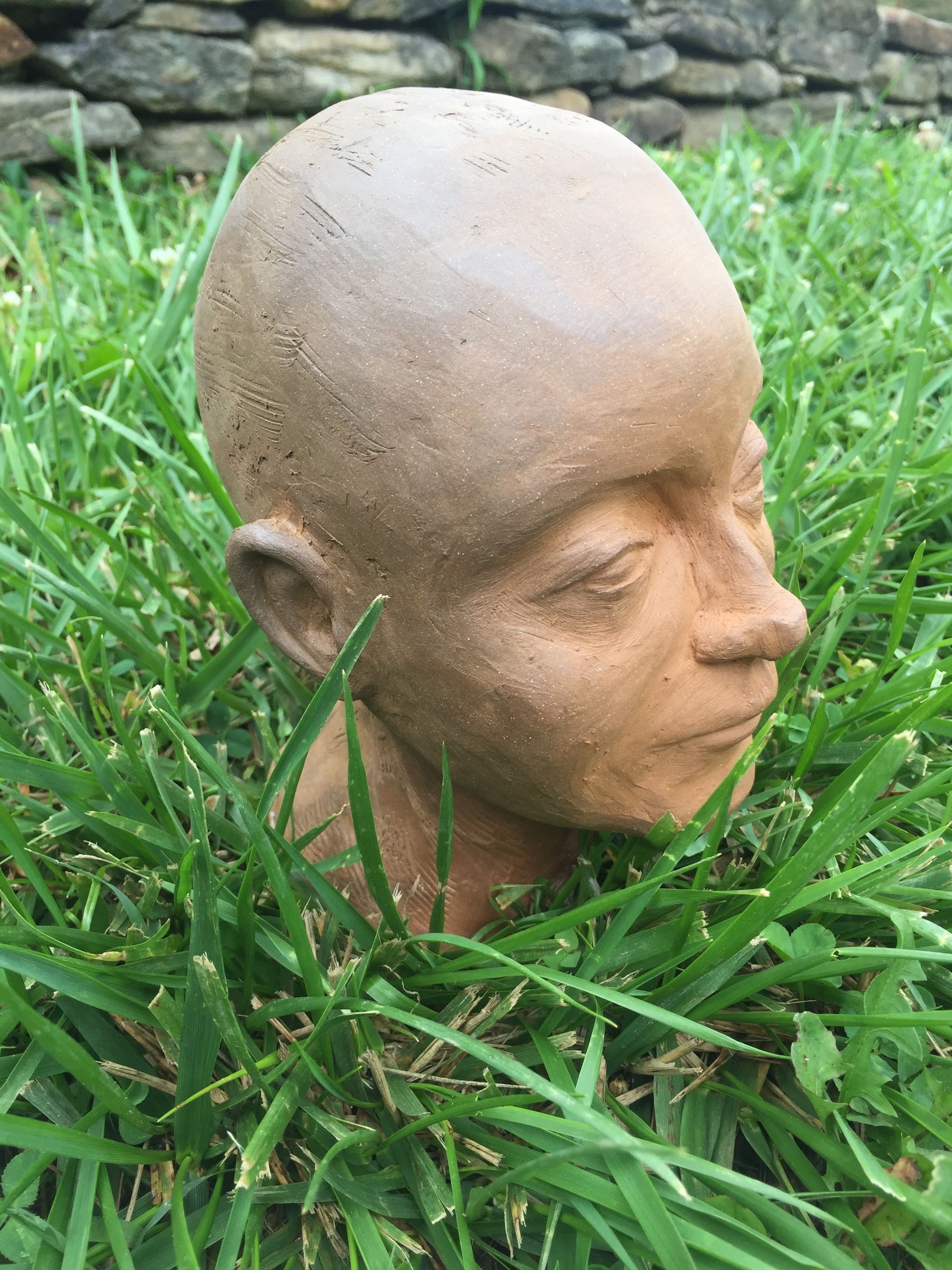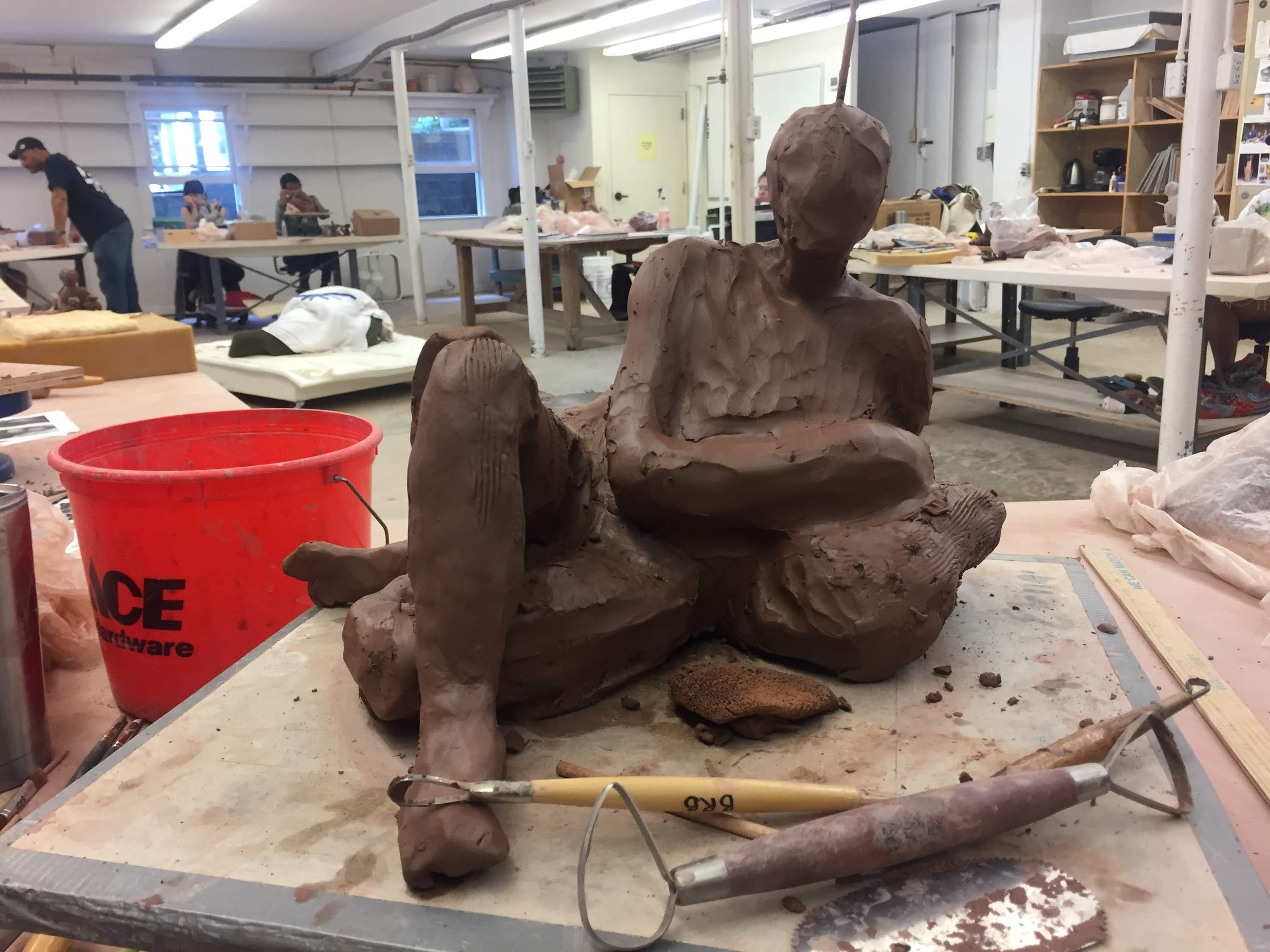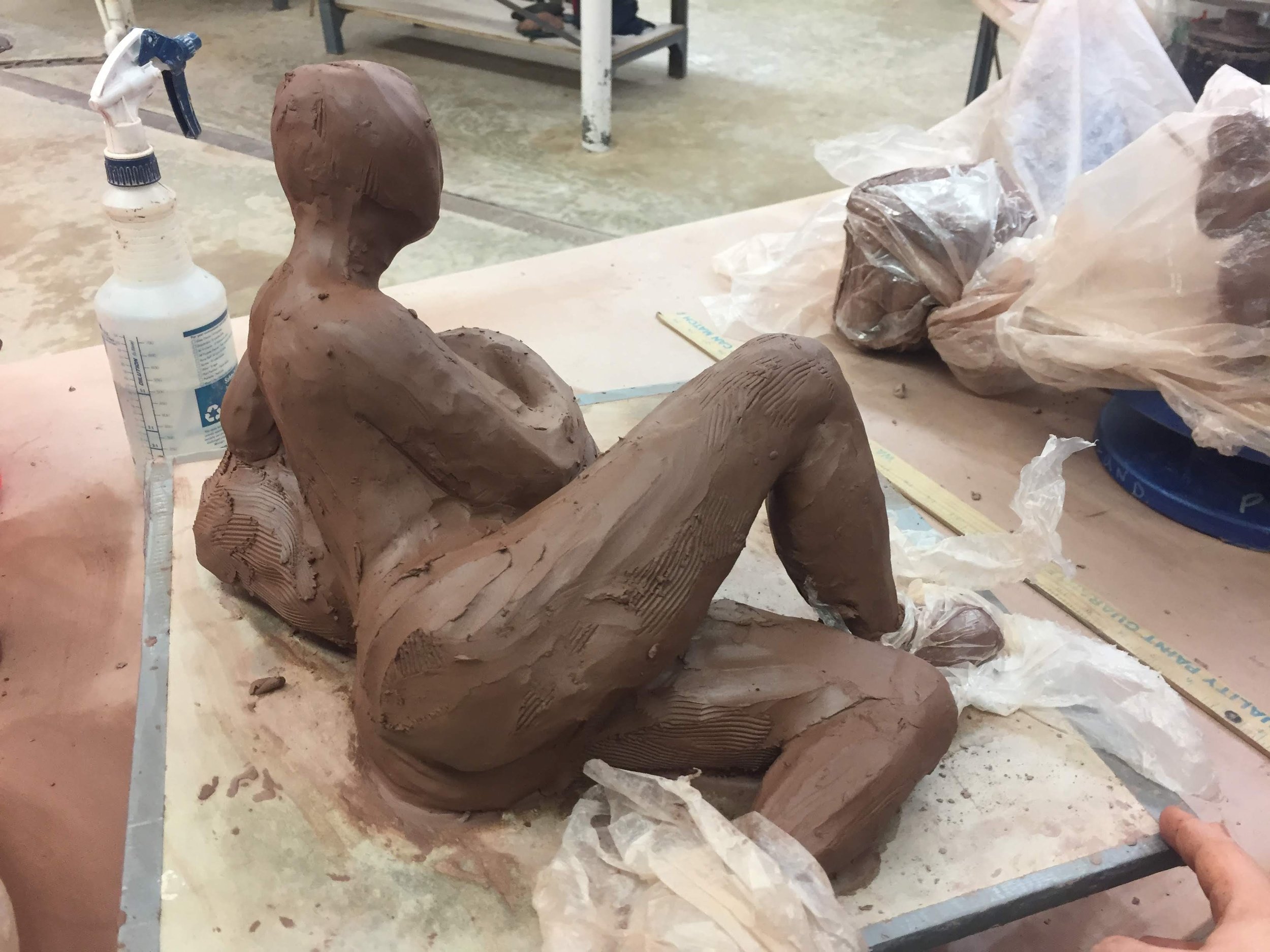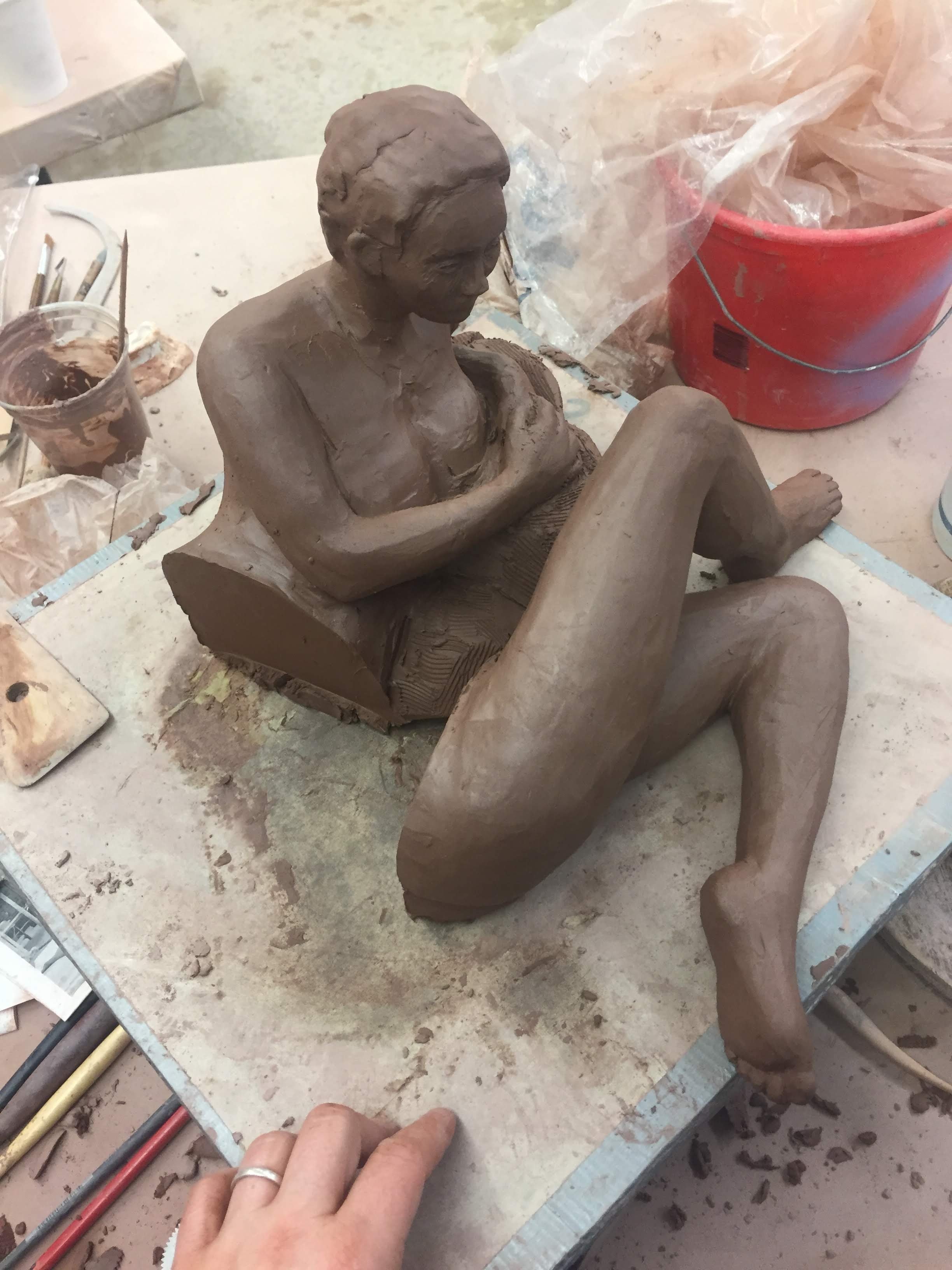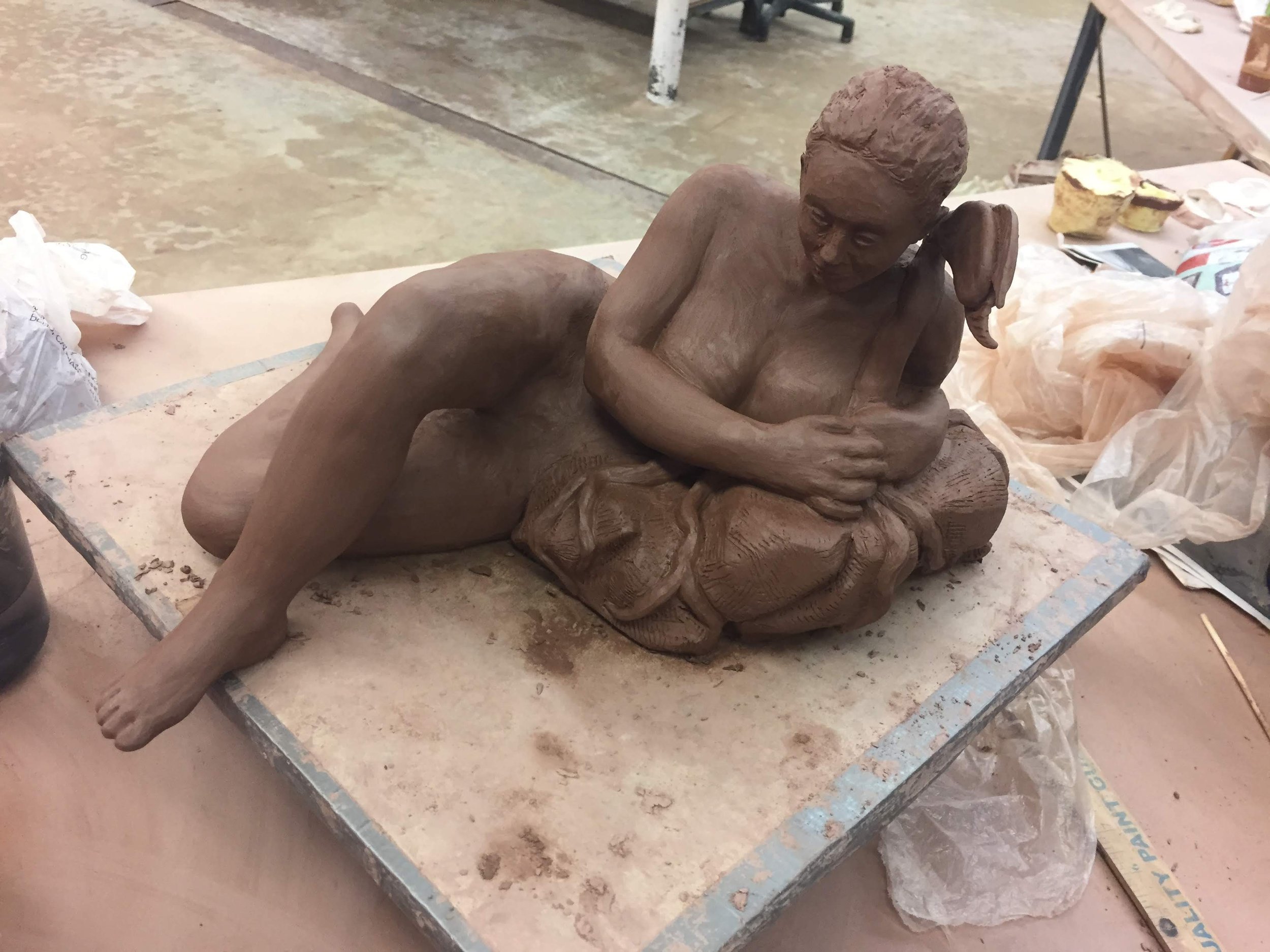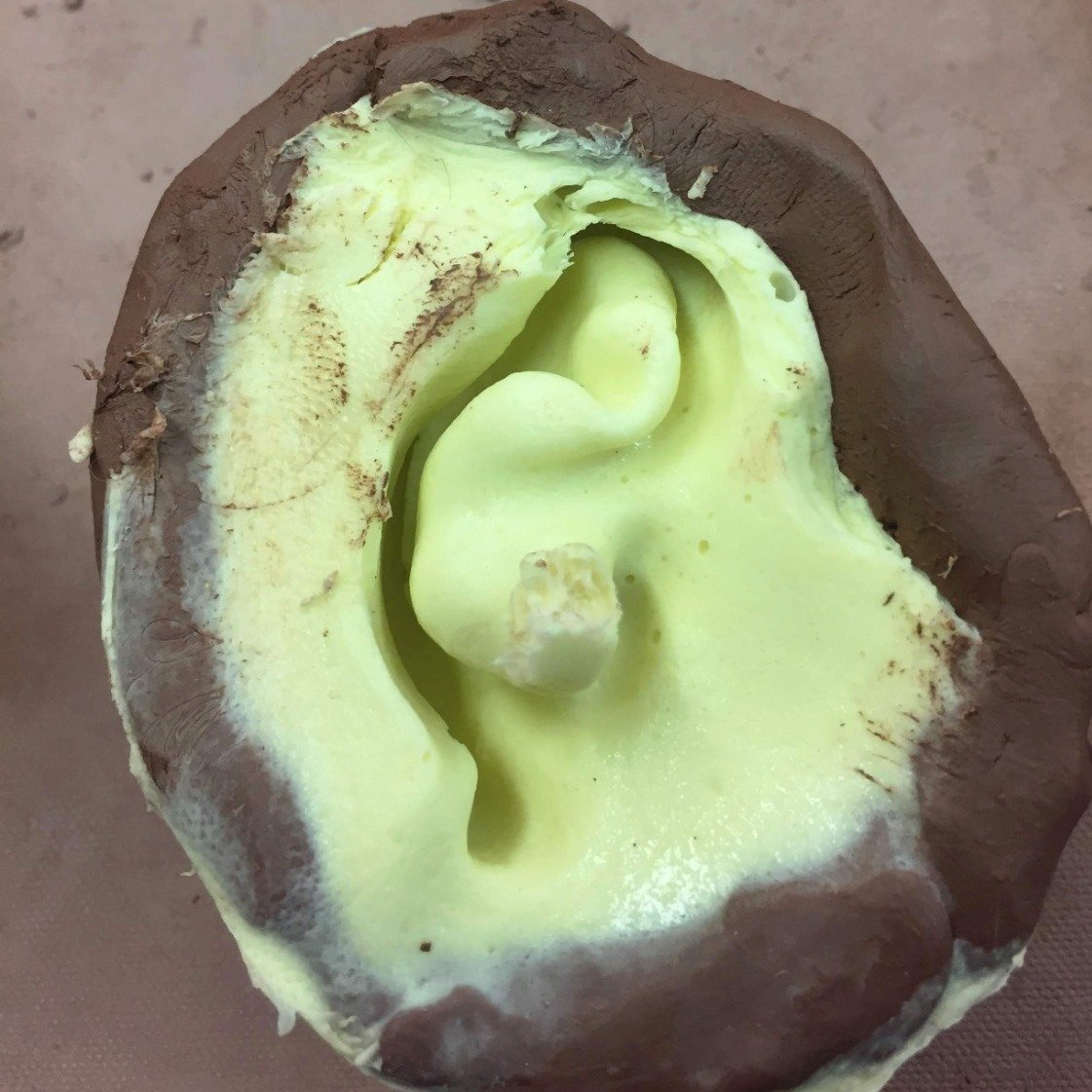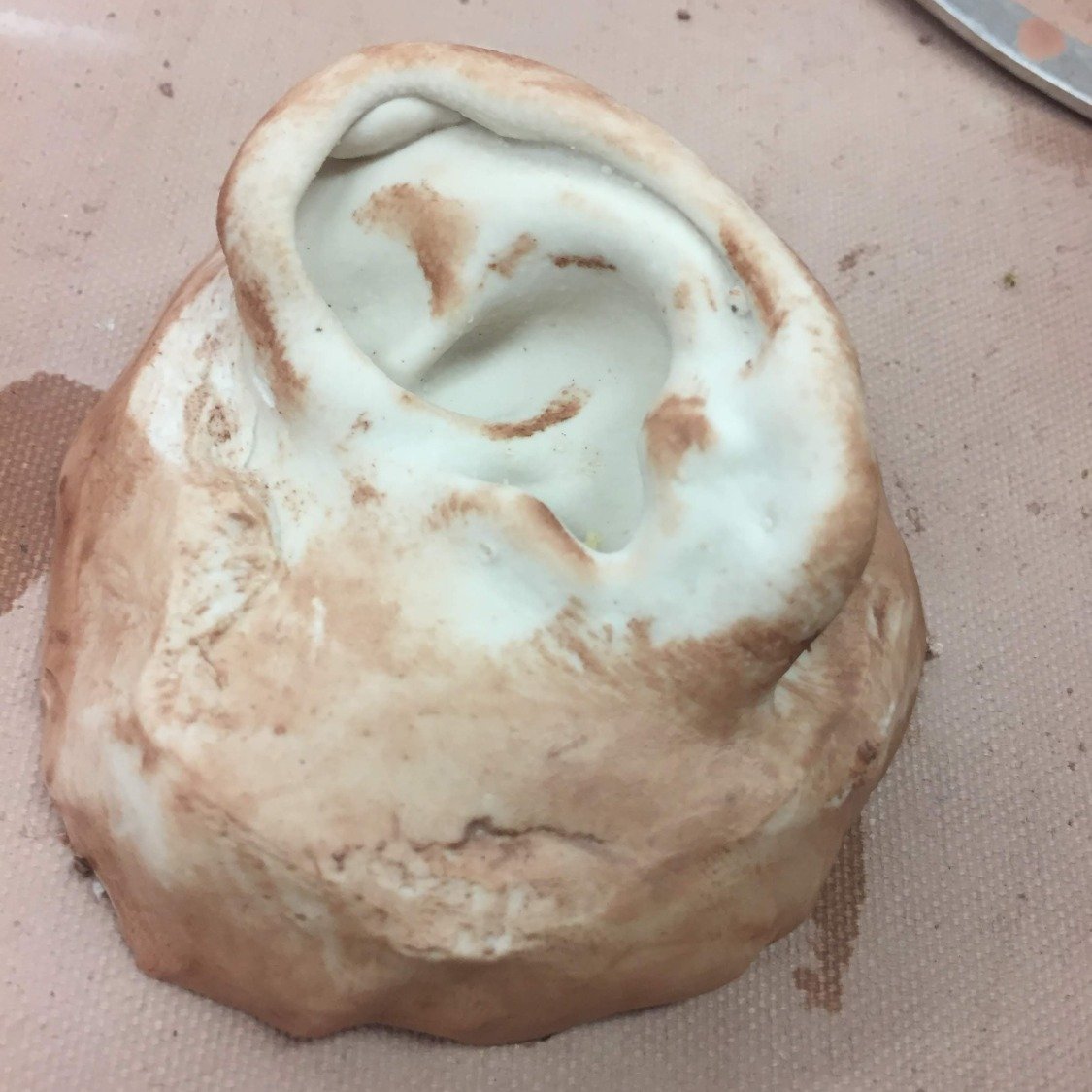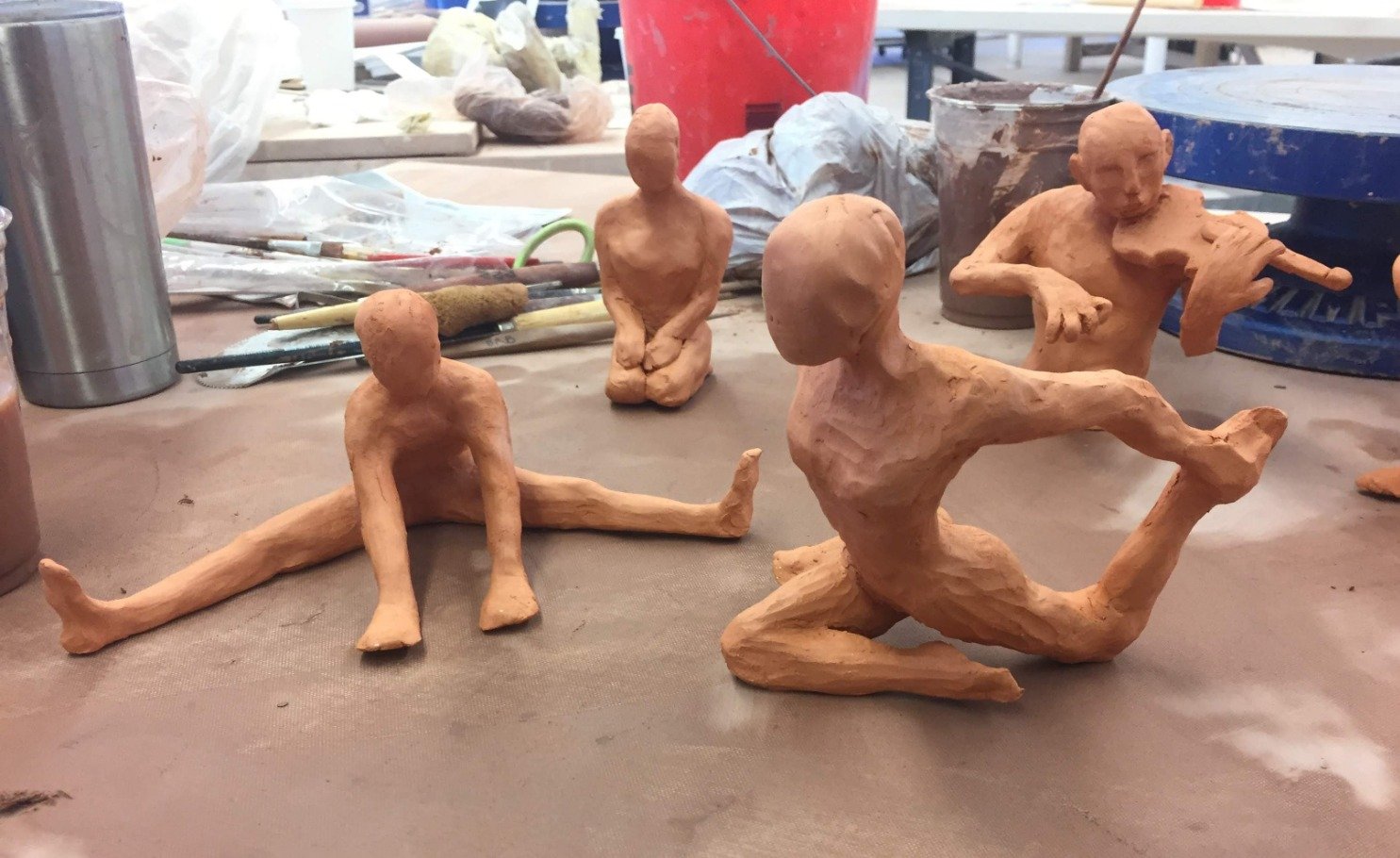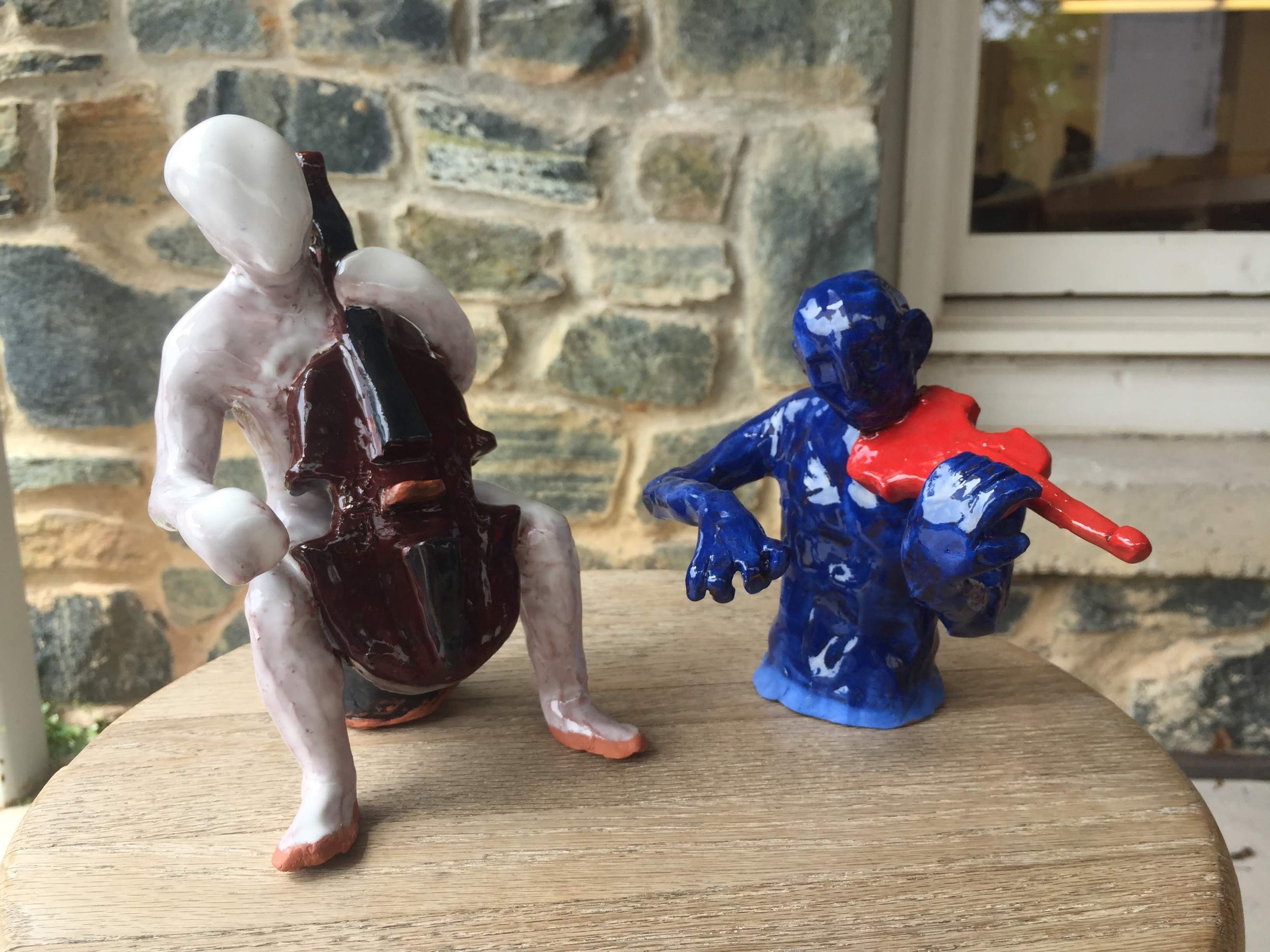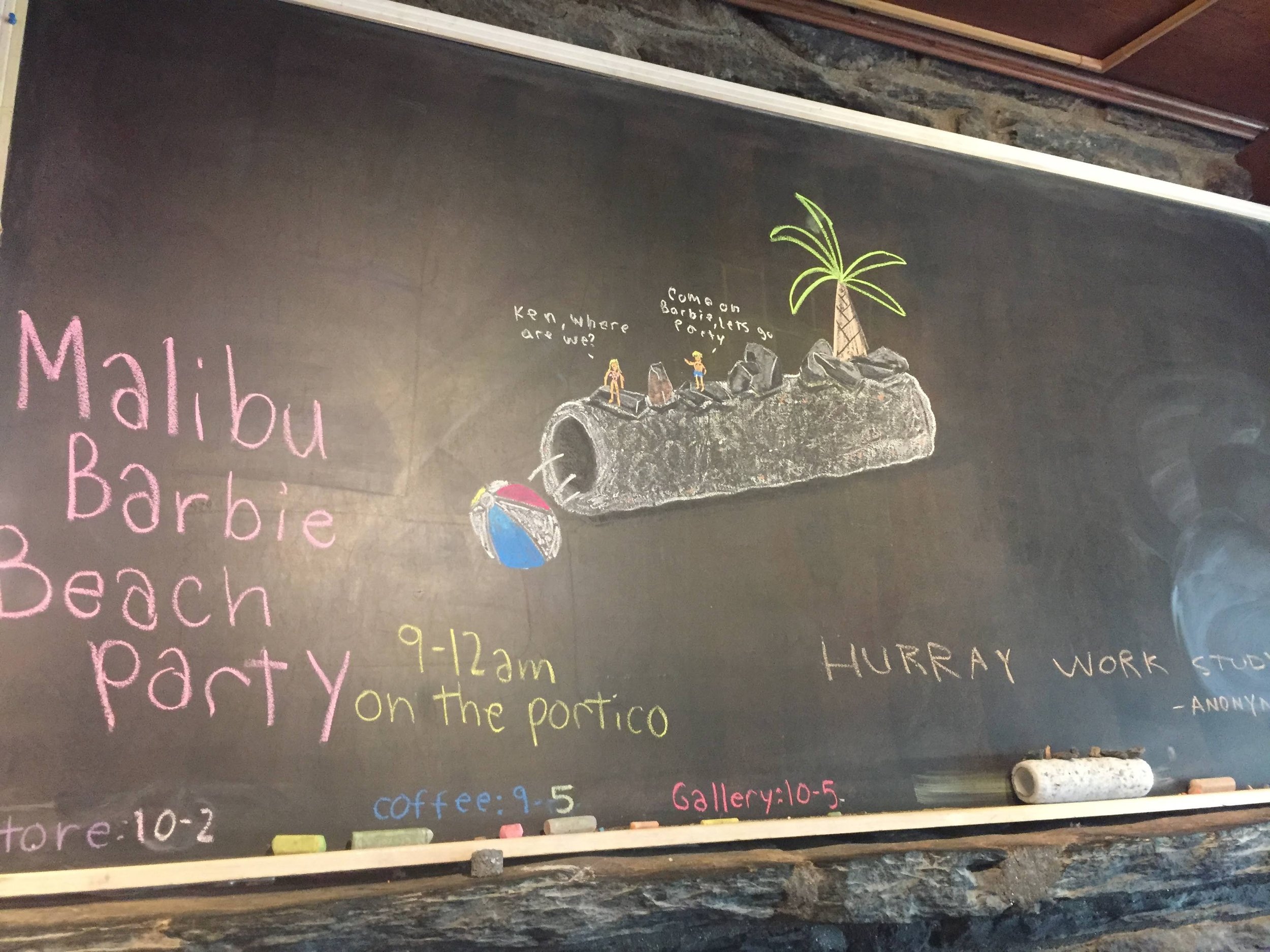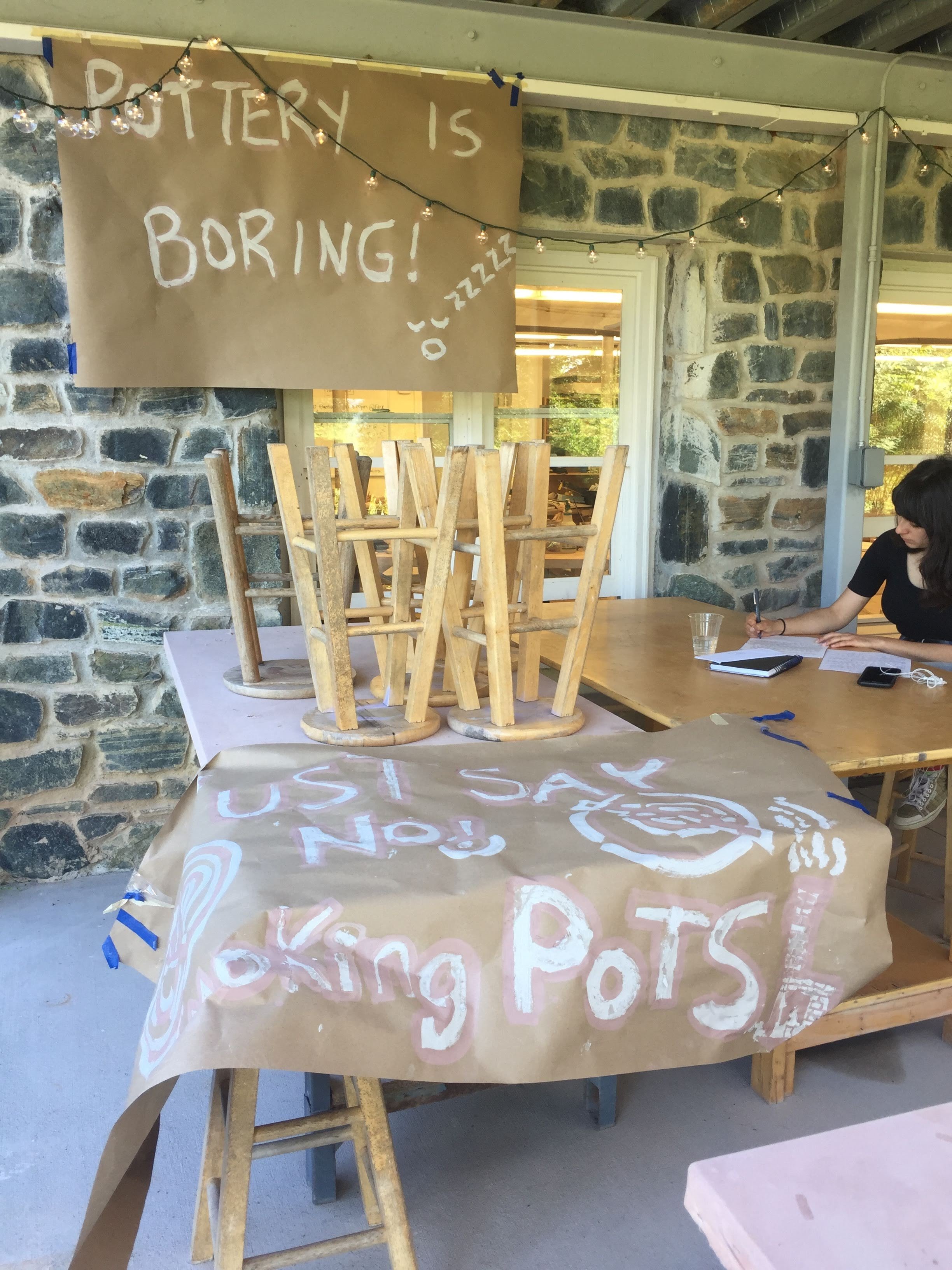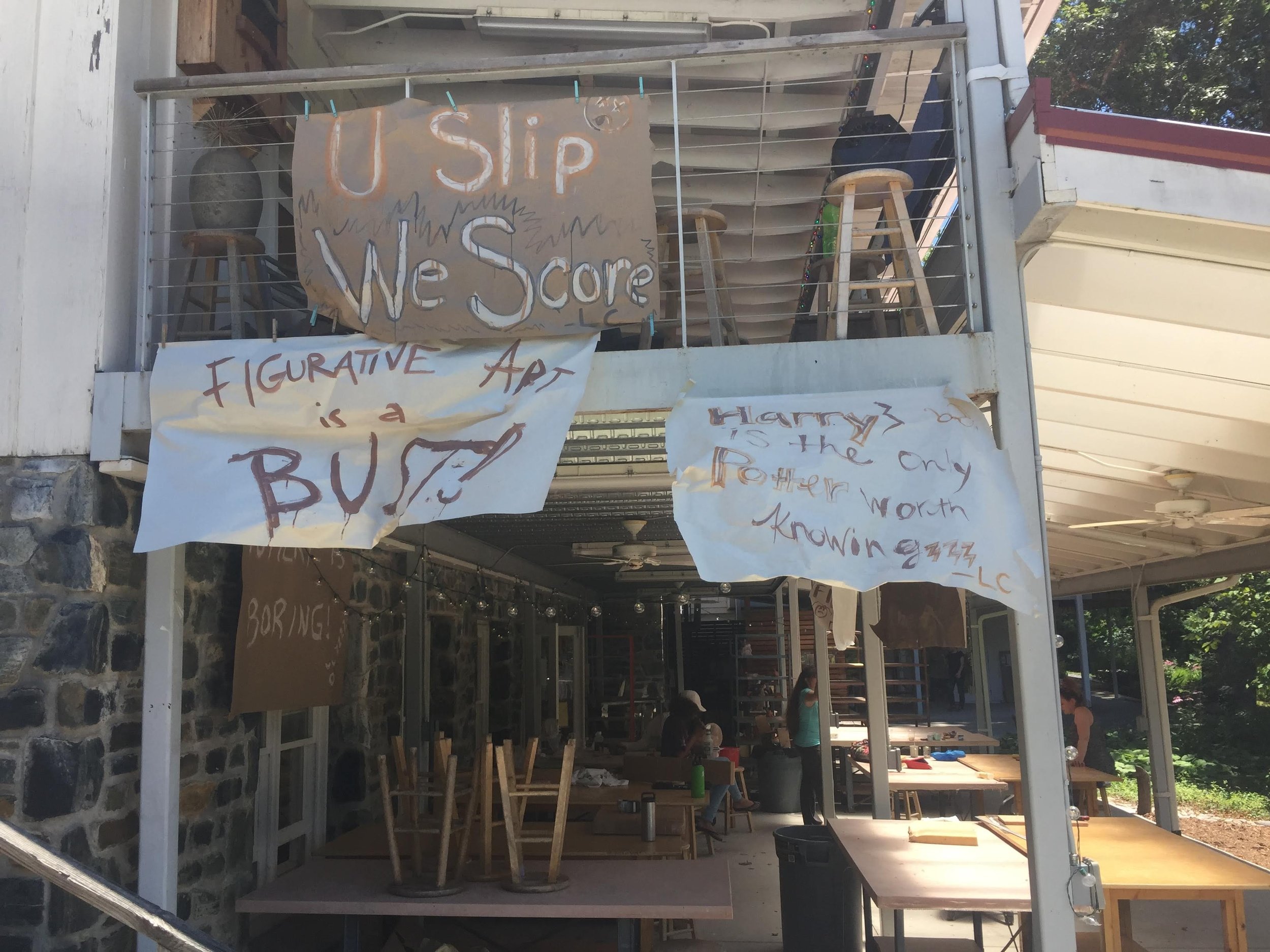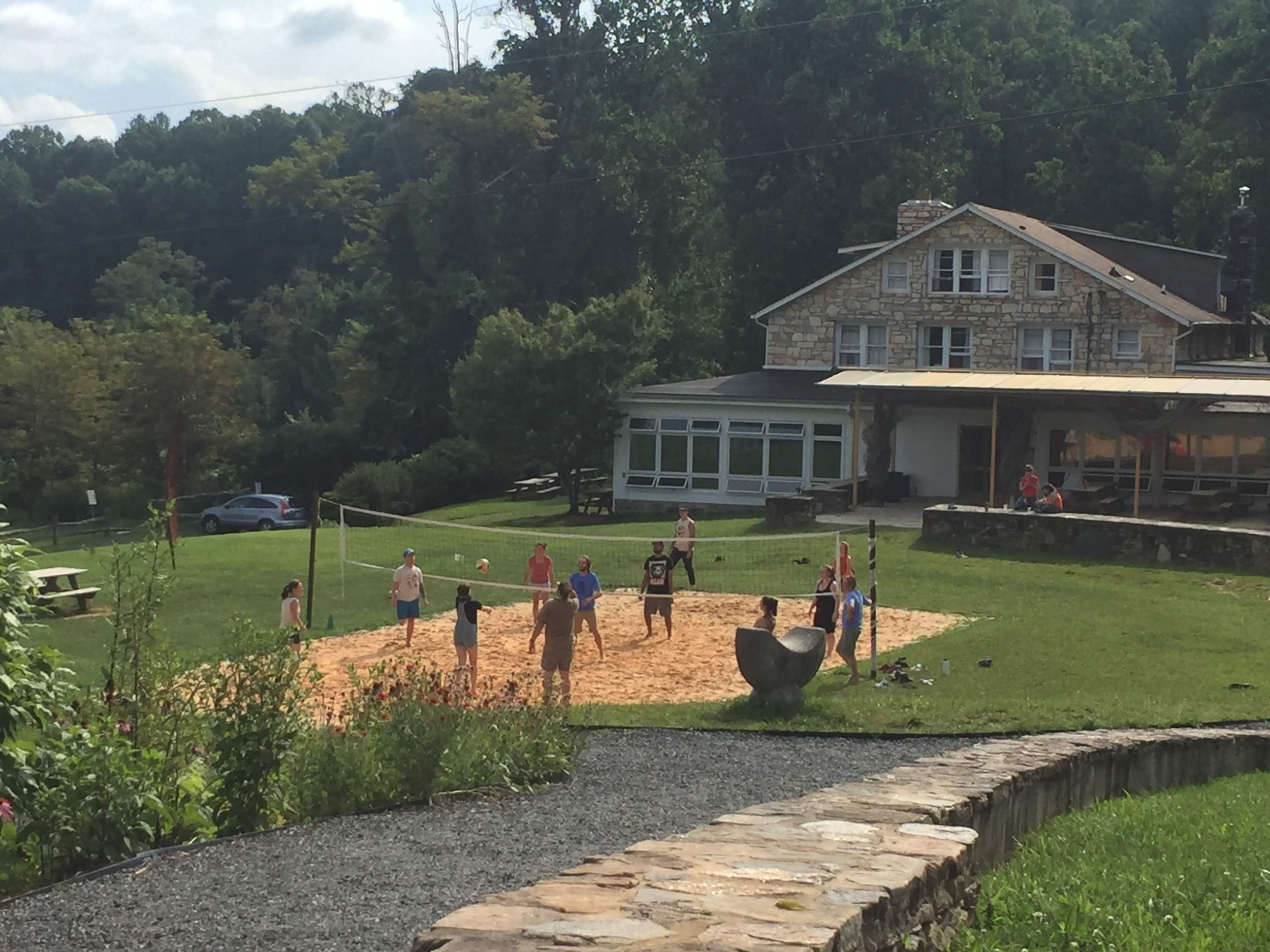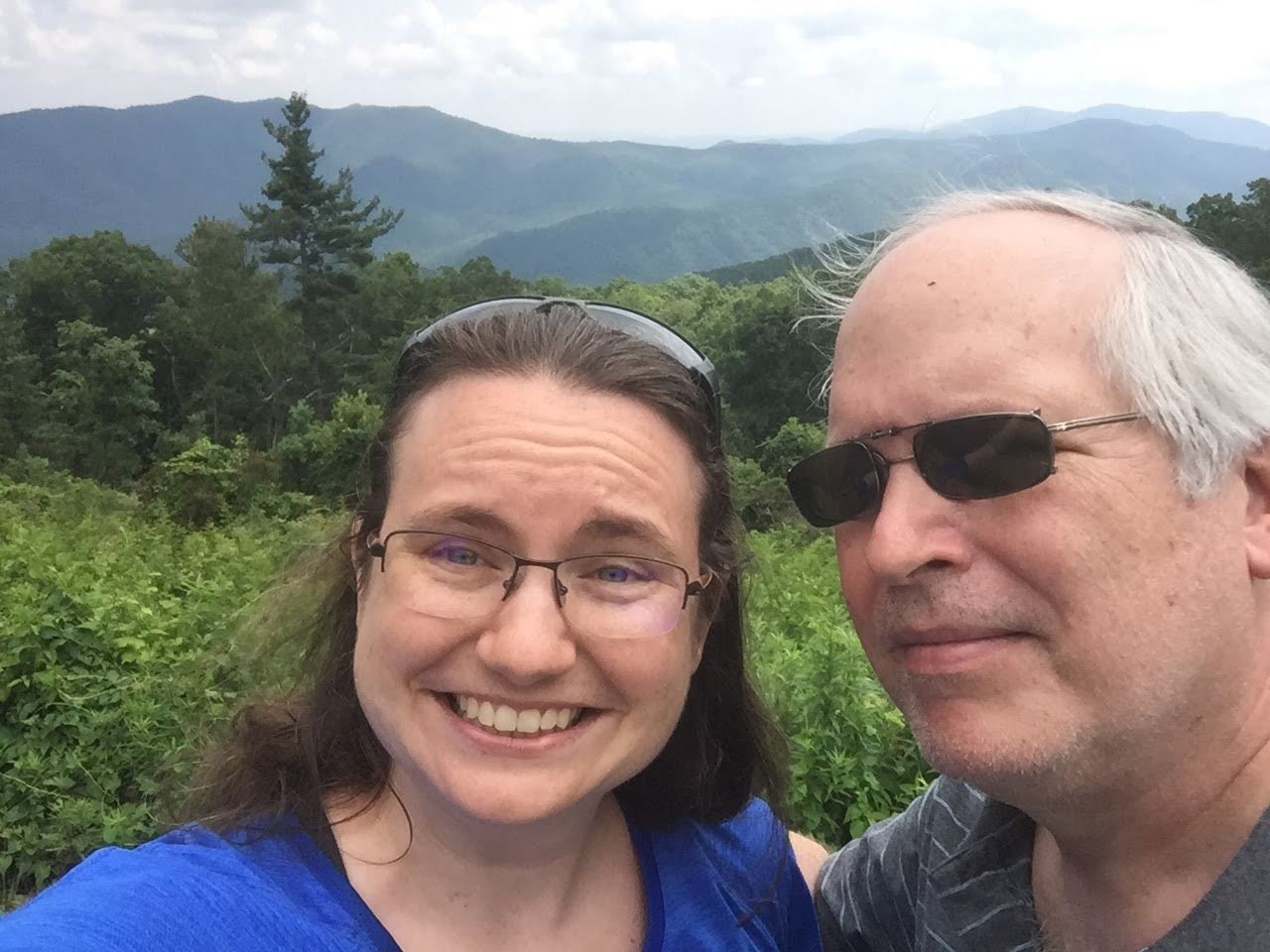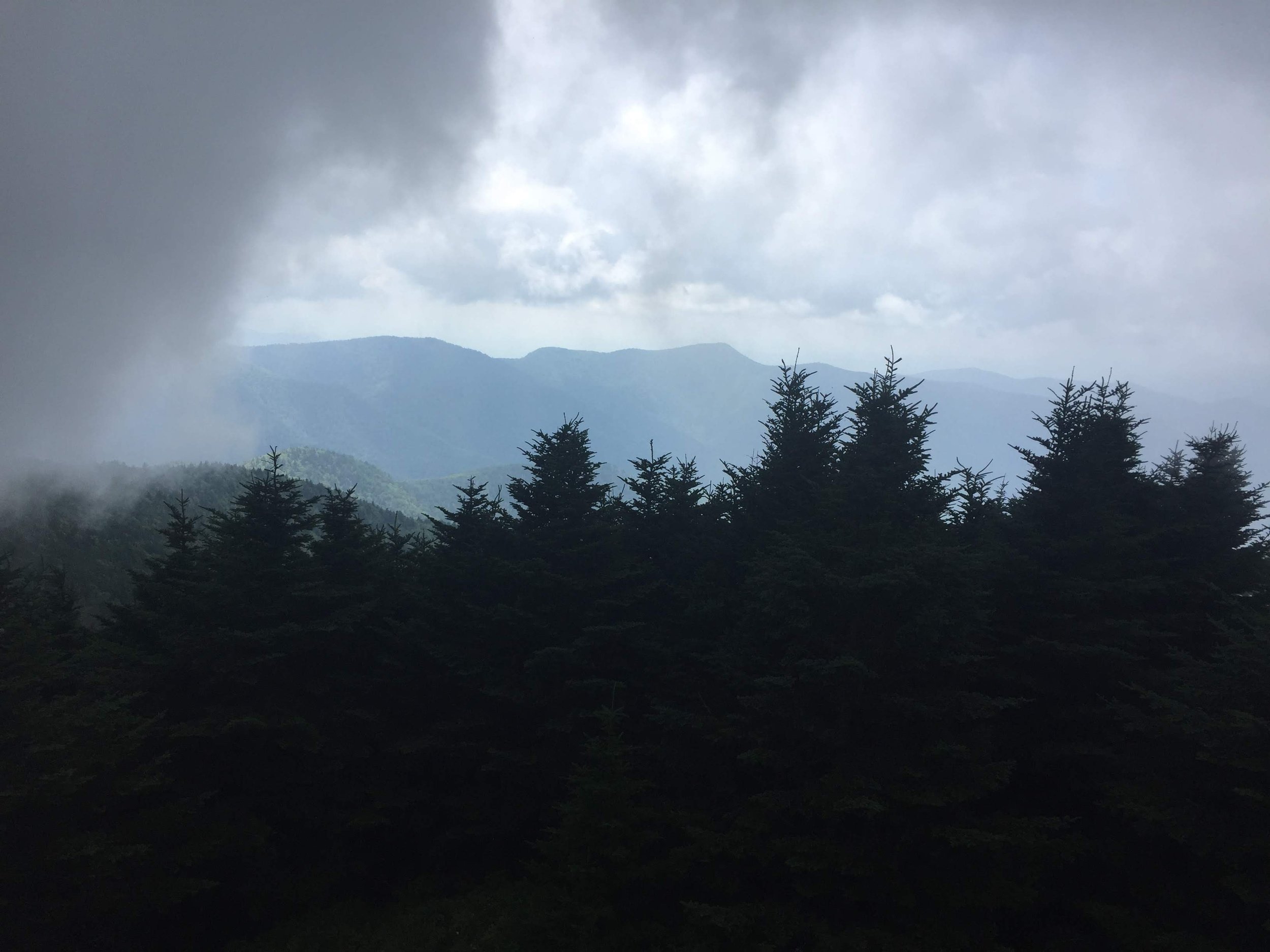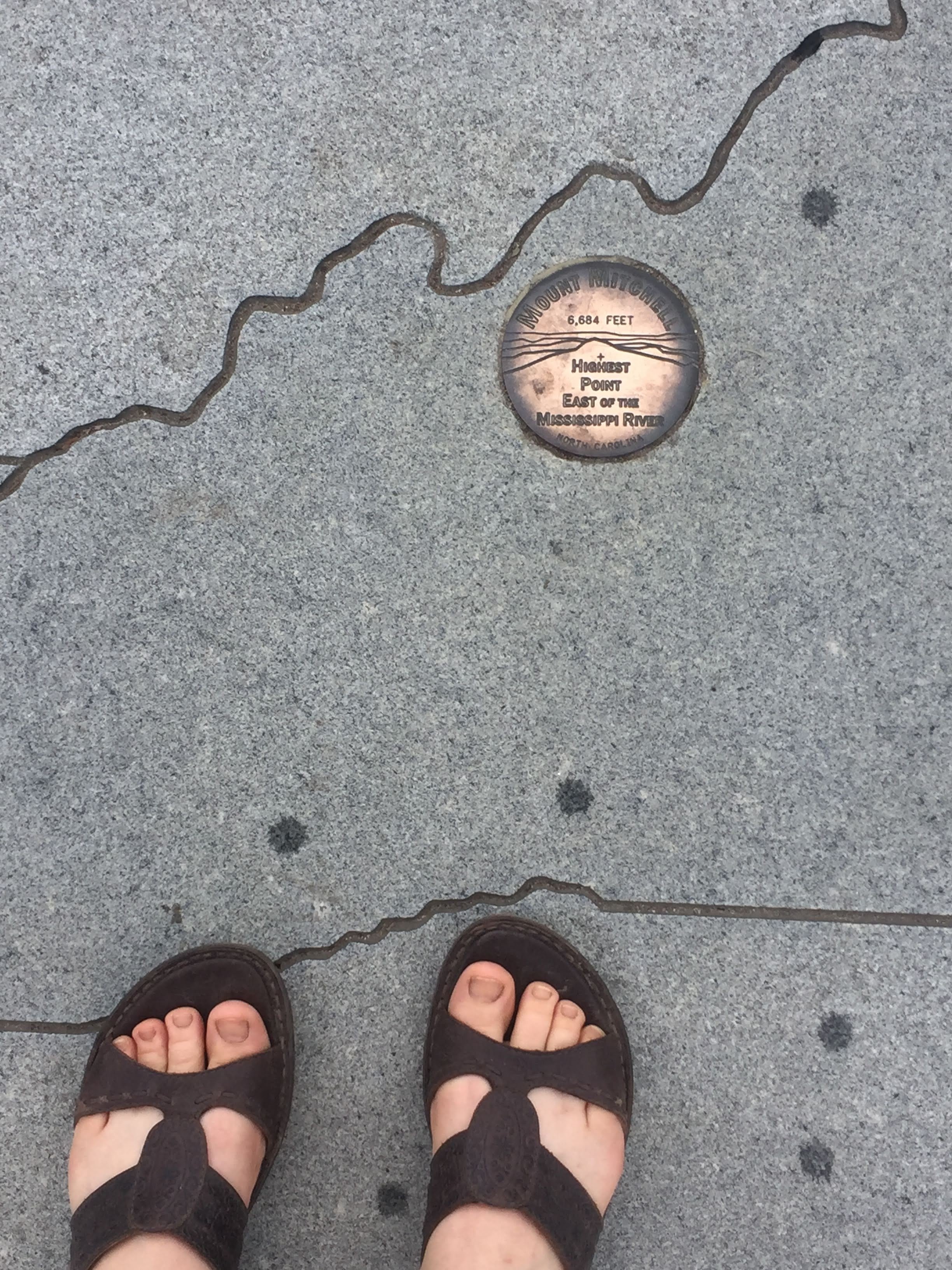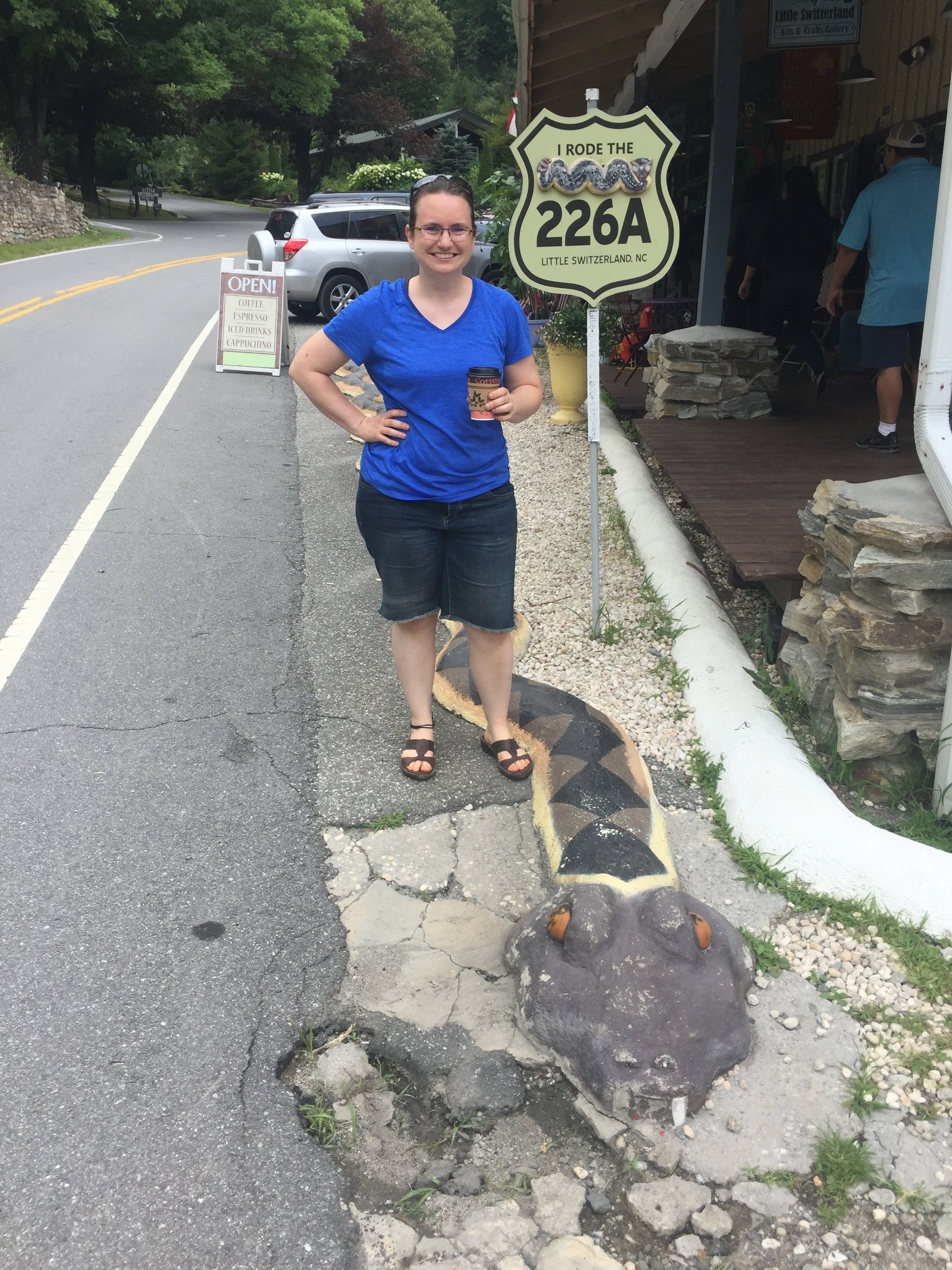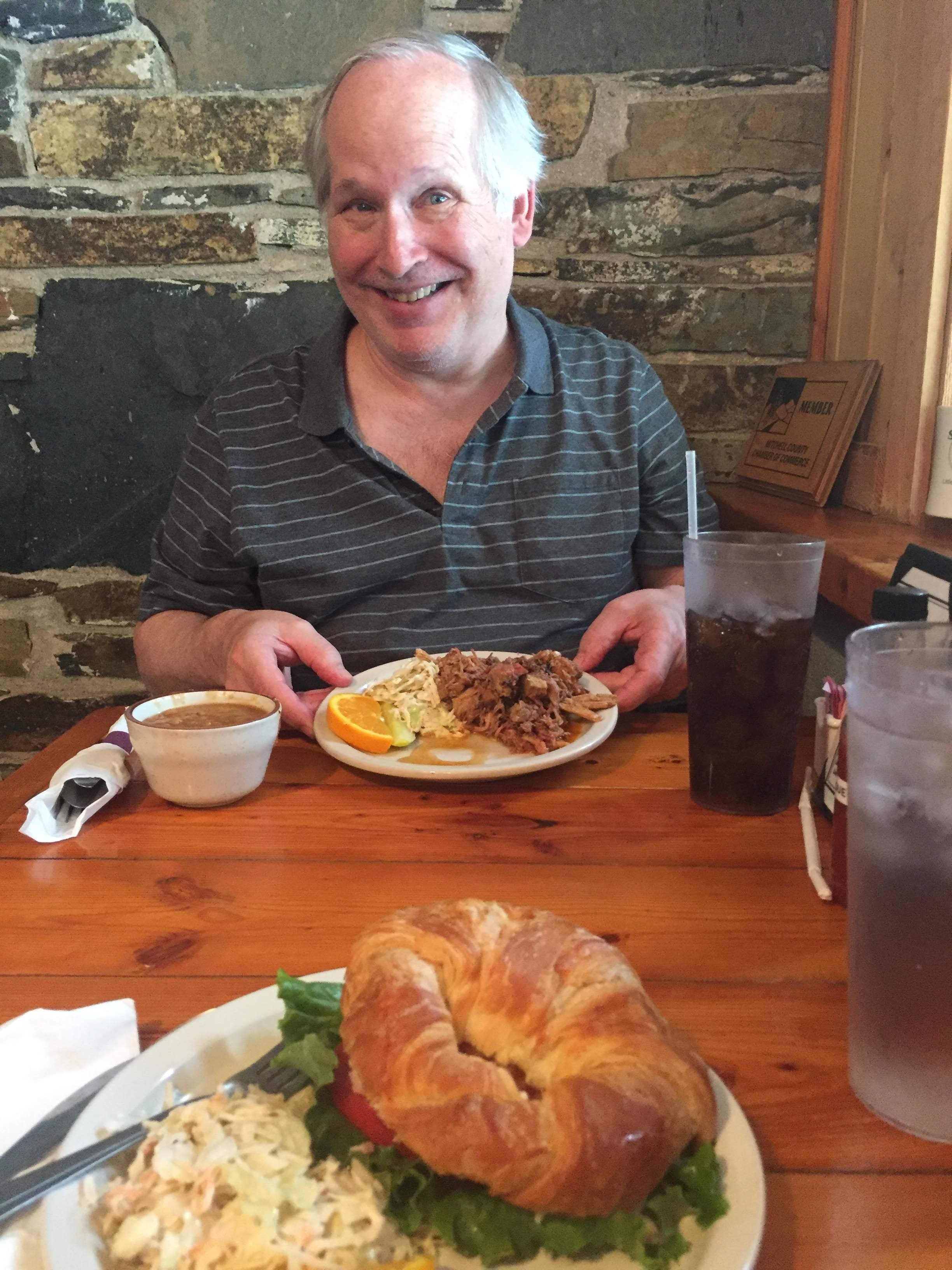Two Dreamy Weeks at Penland
Sculpture and beautiful views on the campus of Penland School of Crafts.
Imagine a place nestled in a bucolic mountain setting of rolling hills and lush rhododendron forests, a place where gravel paths wind among art studios buzzing with energy and creativity. As you walk from your dorm to the coffeehouse, you hear the rhythm of a dozen hammers striking metal, the whoosh of a gas kiln being fired. You gaze in the windows of a building to see students bent over printing presses, while further down the hill, others are weaving textile installations like giant rainbow spiderwebs.
The Dye Shed, one of Penland's many art spaces.
This is Penland School of Crafts, and it's a dreamy place.
Located near Asheville, NC, Penland offers a series of workshops throughout the year in a variety of art and craft disciplines, from glassblowing and ironworking to painting and bookmaking. I was lucky enough to spend some time there recently taking a two-week figurative ceramic sculpture workshop taught by Keith Wallace Smith.
I have been wanting to explore this very topic for, like, ever.
Though I have been focusing on pastel drawing and painting for a while now, I also have a background in ceramics and love making sculpture. In both 2-D and 3-D work, I am particularly drawn to the figure. It has been pretty easy for me to find places to pursue figure drawing, but finding comparable opportunities in clay is much more challenging (I have taken wheel-throwing classes, but have had a hard time finding anything nearby that focus on sculptural ceramic work).
So when I saw this class at Penland, I jumped at the opportunity. And it was incredible.
It's hard to sum up my time there in a neat, simple way. Immersive, intense, transformative. Challenging yet fun. Inspiring and eye-opening. I learned a ton, pushed myself out of my comfort zone, met all kinds of wonderful people, lost track of time, and also got a clearer idea of what I might want to do next with my art.
Here are a few of the key things I took away from the experience.
This is your life: Make art. Eat. Repeat.
Okay, that's a slight exaggeration, but some days, it feels like that's all you do. Seriously, though, the best thing about Penland is that you can get completely immersed in the art you are making. I spent nearly every waking hour in the studio—including many hours that I am not typically awake. I gleefully lost track of time, surprised to look up at the clock and see that it was already after midnight. I happily lost track of days. I never once read the news. I didn't check the balance in my bank account. I knew it would all be okay. The world would keep going without my constant vigilance—it felt luxurious and freeing to let all of that go for two weeks.
Before arriving, I imagined I would have all kinds of free time to fill. I thought I would have plenty of time to go sketch in the woods, hike around the grounds, read books, and take long naps. This illusion quickly dissolved. Sure, I probably *could* have done these things, but I didn't really want to—I was driven to keep working. Hours flew by as I was bent over my work; sometimes it felt like the only way I was able to keep track of time at all was knowing when meals were served.
Speaking of mealtimes, the food is incredible.
Mealtimes were something to look forward to.
If you're imagining standard cafeteria fare, you're wrong. Each meal was something different and creative, and pretty much everything was scrumptious (and full of vegetables, including many grown in their garden). Seriously, I think about 25% of all mealtime conversation revolved around things like, "the food here is so good" and "they should publish a cookbook" and "I've eaten more vegetables here in one day than I usually do in a week." There’s also a cafe selling delicious baked goods (all displayed on artist-made platters, naturally).
Also, having two weeks in which I didn't once have to buy groceries, prepare food, pack a lunch, or wash dishes practically brought tears of joy to my eyes.
Of course, having that kind of freedom means someone else is doing a lot of work—so a shout out of major gratitude to the kitchen staff for preparing such great food, and to the work study students who took time out of their own art making to clean up after everyone!
It is amazing to be surrounded by artists from all over.
Students and instructors from all studios gathered to watch the foundry class's iron pour.
Between the students and instructors, there were about 200 people at Penland while I was there. Everyone is an artist of some kind, with broad-ranging life experiences, perspectives, and creative interests. This is incredibly inspiring and eye-opening. I made a point of gently pushing myself out of my comfort zone and talking to lots of different people. Slightly nerve-wracking for an introvert like me, but definitely worth it. I met and befriended so many wonderful people.
It was fascinating to see the work that other students were making, hear about where they are from and what they do, and share ideas and conversation. The community that forms around 200 strangers in such a short period of time is pretty amazing.
The flip side is that imposter syndrome rears its head from time to time. Being surrounded by so many talented, interesting people can, unfortunately, bring out your insecurities. I think all artists experience this at some point. I have learned that using myself as my own benchmark of progress is the best way to stay centered as an artist—so I used this opportunity to practice staying focused on my own learning and progress, rather than comparing myself to other people. From this headspace, it's also easier to get invigorated and excited by other people's work and to feel grateful for your shared experiences.
Push yourself to learn and experiment. Focus on the process; if you end up with some good work at the end, consider a bonus.
Instructor Keith Wallace Smith demos the beginning stages of sculpting a figure.
If everything I made blew up in the kiln or just plain sucked, I still would have considered the experience a success. Luckily, I ended up not only learning a ton, but also had some pieces that I like (and that survived being force-fired AND shipped across time zones).
My finished bust hanging out in the grass.
In my class, we spent a lot of time working from a live model, which was super interesting and challenging.
A local dog made himself at home on the model stand (it's a cozy dog bed, right?)
A local dog made himself at home on the model stand (it's a cozy dog bed, right?)
I draw and paint from live models regularly, but when you add in another dimension, it gets harder (to state the blatantly obvious). I felt like I was trying to solve a Rubik's cube: you get one side exactly how you want it, then turn to another side to discover that you've messed it up completely. There were a few points I was convinced I would never get it right. Eventually, though, I figured out how to address the challenges I was facing and managed to make something that I feel pretty good about.
Towards the end, we were supposed to alter it in some way to make it our own. Some people made significant alterations, like replacing the head with a skull or adding a dramatic hairdo. I liked my figure as-is and didn't really want to change her, so I altered the part she was leaning on: a pile of pillows became a rocky outcropping on which a single seedling had taken root. I decided my figure could be the Greek goddess Demeter.
We also did some body casting to create reference pieces to use for sculpting body parts. This involved creating a mold using alginate, then making a positive in plaster. Everyone made an ear, then sculpted a larger-than-life version out of clay.
Say what? Casting your ear with alginate is a slightly goopy and awkward affair. Below is the finished mold (left) and plaster positive (right).
Big clay ear!
Lastly, we created "gestures" throughout the class to explore movement and narrative. Like gesture drawings, these were intended to be small, fast pieces focused on what the body was doing and what it was saying. I used this as an opportunity to practice creating figures in more complex positions and figure out the logistics of doing that.
Take time to get out of the studio and soak everything in.
I know I said that I spent every waking moment in the studio, but that's a slight exaggeration (only slightly, though). There were slide presentations by instructors, field trips to local artists' studios...
Workstation in Cristina Cordova's studio.
Lisa Clague's studio was home to several dogs and a chicken (new life goal: have a studio chicken)
...an iron pour...
...and even a Malibu Barbie Beach Party (don't ask).
I said don't ask.
Not to mention a volleyball rivalry between the ceramic sculptors ("lower clay") and the potters ("upper clay"). Complete with tash-talking signs decorating the ceramics building. I increased my team's odds of winning by NOT playing (they still lost).
Plus, my Dad came up to visit over the weekend, so I spent some time with him exploring Asheville and the Blue Ridge Parkway. This included lunch at the quaint Switzerland Cafe and General Store and a visit to Mount Mitchell, the highest point east of the Mississippi River (6684 ft).
Overall, I had a fantastic time, met some amazing people, and have a lot of food for thought for my art practice and life in general going forward. I definitely recommend Penland to anyone who craves an intense, immersive creative experience!
Have you ever been to Penland or considered going? I'd love to hear about your experience!


